Caroline Leavitt's Blog, page 12
January 14, 2020
Over 14K readers and writers can't be wrong: Come join Jacob Marquez's Reading Corner on Facebook. He talks about it--and himself--here!
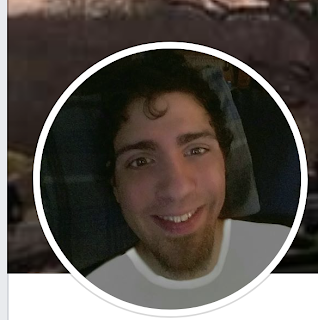
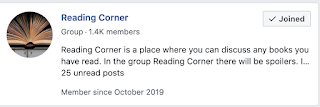

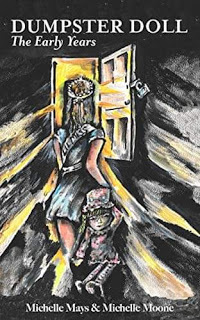
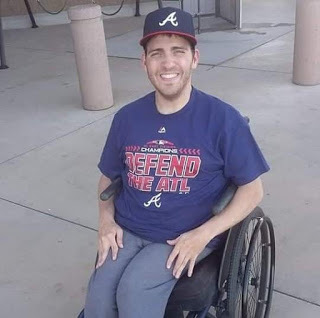
It is always a cause for celebration (bring out the champagne) when someone is promoting books and making a warm, safe, lively community for authors on line. And that’s Jacob Marquez who began Reading Corner on Facebook.
Who better to introduce himself than Jacob himself?
I everyone, my name is Jacob Marquez. I live in Texas and have a Bachelor of Science degree in Broadcasting and Electronic Media from West Texas University. I've won many different awards in college for several of my media projects. I also have Cerebral Palsy, but I am fortunate enough that I don't have any complications from my Cerebral Palsy, I just can't walk by myself without some assistance.
I am the creator of the Facebook group called Reading Corner. When I am not reading, I enjoy going swimming, hanging out with family and friends...along with my sweet baby dog Tiffany. I got my love for reading from my mom. If I could get the chance to meet anyone it would have to be "Oprah Winfrey." I learn so much from her over the years, and I would also love to get to meet all the authors I've connected with through social media. I would also like to meet Jenna Bush Hager and Hoda Kotb someday .
Thanks so much my friend!
Thank YOU, Jacob.
What inspired you to start Reading Corner on Face Book?
My inspiration for starting Reading Corner can be summed up into three words: love, books, and kindness. I have joined a lot of reading groups on Facebook over the past year and half. The biggest thing I have noticed on a consistent basis is that people are not very friendly or kind to each other in some of these various groups. In some of these groups you can't even discuss books you have read because some people have not read the book. In our group Reading Corner members can discuss any books they like in a safe, caring, loving, and encouraging environment. In Reading Corner we have a monthly book club selection chosen by me. Then either in the middle of the month or at the end of the month we have the author of the book come in and do a live chat to discuss their book. Live Chats are where the author pop in and out throughout the schedule day at their convenience answering members questions or comments about their book. The wonderful thing is some like to do giveaways where they will give one lucky member the chance to win a signed copy of their book. The author will usually just pick at random a person that participated in the live chat that asked a really good question. Finally the day after the Live chat I will post discussion questions to get the group members engaged in a meaningful group discussion about the book. I will post three questions a day for four days.
What I love best about Readers Corner is the warmth and kindness. How do you make sure it keeps on?
I think it's very simple really I think it's the job of the administrators to set the tone of the group and to lead by example.
Our group has two administrators myself and my good friend Julie Draughn Emfinger. Julie is just great. She has a son with special needs. Her son's name is Drew. He has high-functioning autism. Julie is also working on her master's degree in nursing. I believe that there should be more kindness in the world especially in these politically charged times we are living in today. One thing I do in our group is to post an inspirational quote for the day. I do not let anyone discuss politics in our group.
I know people have issues in life, that stuff comes up. Well we all face obstacles in our lives, but the key is how are we going to react to those obstacles. I feel you just need to treat people equally with respect because there's too much hate in the world . And everyone deserves the same respect across the board. We all have stories and we all come from different backgrounds but we are also all the same. So I just believed to treat people with kindness and understanding because the world is hard enough as it is.
And what if someone is unkind?
First I give a gentle reminder. Then we will just kick them out of the group and then just block them from the group. Honestly, who has time for unkind people? The answer is no one does.
What do you see happening with Reading Corner in the future?
My goal is to keep adding new members to our group and to get the word out about our group. In Reading Corner we will most definitely continue having Live Chats and Giveaways with our monthly featured authors.
I am also planning on doing live stream chats with authors that have books out that I find to be interesting and that I think people should know about. They don’t necessarily have to be the author of the month. I would love to get some people from the publishing industry involved in our group in some form or fashion.
What book is on your radar that people might not know?
There are so many great books on my radar it's hard just to pick one. There are two that come to mind at the moment off the top of my head. The first book is our current January 2020 Selection and it's called A Heart Not Easily Broken by M.J.Kane. M.J. Kane is a fantastic author and she is a true inspiration. M.J. has overcome so many obstacles and challenges in her life. Here is a description of this great book.
Ebony Campbell is a smart, sexy career-oriented black woman who wants nothing more than a summer fling with a man who challenges her mind and body. What she doesn’t expect is Brian Young, a blond-haired, blue-eyed bass player to step up to the challenge. Despite negative reactions, their fling develops into a deep relationship, and Ebony discovers juggling love, family, and career are nothing compared to the ultimate betrayal she endures. Now her dreams spiral into lies and secrets that threaten her future and the trust of those she loves.
We will be Having a Live Chat and Giveaway with M.J.Kane on Saturday January 25th and a group discussion January 26 through the 29th
The second book that I think everyone should know about and read is called Dumpster Doll: The Early Yearsby Michelle Mays and Michelle Moone. It's about Michelle Mays's life growing up in a dysfunctional family and her journey in the foster care system. It is a very powerful and memorable book that unflinchingly shines a light on family turmoil, flaws in judicial systems, and ultimately, the grit and tenacity that thousands of children exhibit each day just to make it through.
The wonderful Michelle Mays will be joining us for a Live Facebook chat to tell us about her powerful and unforgettable book at 6pm Central Standard Time Thursday January 30th
Do you write? Have you ever thought of writing your life story?
No I'm a horrible writer. If I ever did write a book. I would have to have a ghost writer help me with the book. Plus, I am only 36 I have a lot of life left to live and experience before I write a book about my life.
You now have over 1400 people in the group, and in a very short time! That’s amazing!
Yes I am super surprise how the group has grown so fast. But I the other hand I am not because I have just used my networking skills to build the group as well.
How can readers and writers get into the Reading Corner?
Go right here! https://www.facebook.com/groups/440987516488774
Sometimes I will friend an author whose book I liked on Facebook and tell them and ask them to join. Recently, Jamie Ford just joined! I usually put up a welcome post, but I forgot to do one, and then Jamie told me he had been in the group for a couple of weeks!
Will have many great Authors in our group just as members.. here are just a few of them Jean Kwok, Jamie Ford, Caroline Leavitt, Sally Koslow , Benjamin W.Bass Chris Miller, William Dameron, James Lott Jr, Rachel Radner, Jillian Cantor, David Heska Wanbli Weiden, A.J. Bass, M.J. Kane, Carmen DeSousa and FE Feeley Jr. and so many more. So what are you waiting for come Join the Reading Corner today!
<!-- /* Font Definitions */ @font-face {font-family:"<span class="goog-spellcheck-word" style="background: yellow none repeat scroll 0% 0%;" id=":dg.27" tabindex="-1" role="menuitem" aria-haspopup="true">Cambria</span> Math"; <span class="goog-spellcheck-word" style="background: yellow none repeat scroll 0% 0%;" id=":dg.28" tabindex="-1" role="menuitem" aria-haspopup="true">panose</span>-1:2 4 5 3 5 4 6 3 2 4; <span class="goog-spellcheck-word" style="background: yellow none repeat scroll 0% 0%;" id=":dg.29" tabindex="-1" role="menuitem" aria-haspopup="true">mso</span>-font-<span class="goog-spellcheck-word" style="background: yellow none repeat scroll 0% 0%;" id=":dg.30" tabindex="-1" role="menuitem" aria-haspopup="true">charset</span>:0; <span class="goog-spellcheck-word" style="background: yellow none repeat scroll 0% 0%;" id=":dg.31" tabindex="-1" role="menuitem" aria-haspopup="true">mso</span>-generic-font-family:roman; <span class="goog-spellcheck-word" style="background: yellow none repeat scroll 0% 0%;" id=":dg.32" tabindex="-1" role="menuitem" aria-haspopup="true">mso</span>-font-pitch:variable; <span class="goog-spellcheck-word" style="background: yellow none repeat scroll 0% 0%;" id=":dg.33" tabindex="-1" role="menuitem" aria-haspopup="true">mso</span>-font-signature:-536870145 1107305727 0 0 415 0;} @font-face {font-family:<span class="goog-spellcheck-word" style="background: yellow none repeat scroll 0% 0%;" id=":dg.34" tabindex="-1" role="menuitem" aria-haspopup="true">Calibri</span>; <span class="goog-spellcheck-word" style="background: yellow none repeat scroll 0% 0%;" id=":dg.35" tabindex="-1" role="menuitem" aria-haspopup="true">panose</span>-1:2 15 5 2 2 2 4 3 2 4; <span class="goog-spellcheck-word" style="background: yellow none repeat scroll 0% 0%;" id=":dg.36" tabindex="-1" role="menuitem" aria-haspopup="true">mso</span>-font-<span class="goog-spellcheck-word" style="background: yellow none repeat scroll 0% 0%;" id=":dg.37" tabindex="-1" role="menuitem" aria-haspopup="true">charset</span>:0; <span class="goog-spellcheck-word" style="background: yellow none repeat scroll 0% 0%;" id=":dg.38" tabindex="-1" role="menuitem" aria-haspopup="true">mso</span>-generic-font-family:<span class="goog-spellcheck-word" style="background: yellow none repeat scroll 0% 0%;" id=":dg.39" tabindex="-1" role="menuitem" aria-haspopup="true">swiss</span>; <span class="goog-spellcheck-word" style="background: yellow none repeat scroll 0% 0%;" id=":dg.40" tabindex="-1" role="menuitem" aria-haspopup="true">mso</span>-font-pitch:variable; <span class="goog-spellcheck-word" style="background: yellow none repeat scroll 0% 0%;" id=":dg.41" tabindex="-1" role="menuitem" aria-haspopup="true">mso</span>-font-signature:-536859905 -1073732485 9 0 511 0;} /* Style Definitions */ p.<span class="goog-spellcheck-word" style="background: yellow none repeat scroll 0% 0%;" id=":dg.42" tabindex="-1" role="menuitem" aria-haspopup="true">MsoNormal</span>, <span class="goog-spellcheck-word" style="background: yellow none repeat scroll 0% 0%;" id=":dg.43" tabindex="-1" role="menuitem" aria-haspopup="true">li</span>.<span class="goog-spellcheck-word" style="background: yellow none repeat scroll 0% 0%;" id=":dg.44" tabindex="-1" role="menuitem" aria-haspopup="true">MsoNormal</span>, div.<span class="goog-spellcheck-word" style="background: yellow none repeat scroll 0% 0%;" id=":dg.45" tabindex="-1" role="menuitem" aria-haspopup="true">MsoNormal</span> {<span class="goog-spellcheck-word" style="background: yellow none repeat scroll 0% 0%;" id=":dg.46" tabindex="-1" role="menuitem" aria-haspopup="true">mso</span>-style-<span class="goog-spellcheck-word" style="background: yellow none repeat scroll 0% 0%;" id=":dg.47" tabindex="-1" role="menuitem" aria-haspopup="true">unhide</span>:no; <span class="goog-spellcheck-word" style="background: yellow none repeat scroll 0% 0%;" id=":dg.48" tabindex="-1" role="menuitem" aria-haspopup="true">mso</span>-style-<span class="goog-spellcheck-word" style="background: yellow none repeat scroll 0% 0%;" id=":dg.49" tabindex="-1" role="menuitem" aria-haspopup="true">qformat</span>:yes; <span class="goog-spellcheck-word" style="background: yellow none repeat scroll 0% 0%;" id=":dg.50" tabindex="-1" role="menuitem" aria-haspopup="true">mso</span>-style-parent:""; margin:0in; margin-bottom:.0001pt; <span class="goog-spellcheck-word" style="background: yellow none repeat scroll 0% 0%;" id=":dg.51" tabindex="-1" role="menuitem" aria-haspopup="true">mso</span>-pagination:widow-orphan; font-size:12.0pt; font-family:"Times New Roman",serif; <span class="goog-spellcheck-word" style="background: yellow none repeat scroll 0% 0%;" id=":dg.52" tabindex="-1" role="menuitem" aria-haspopup="true">mso</span>-<span class="goog-spellcheck-word" style="background: yellow none repeat scroll 0% 0%;" id=":dg.53" tabindex="-1" role="menuitem" aria-haspopup="true">fareast</span>-font-family:<span class="goog-spellcheck-word" style="background: yellow none repeat scroll 0% 0%;" id=":dg.54" tabindex="-1" role="menuitem" aria-haspopup="true">Calibri</span>;} a:link, span.<span class="goog-spellcheck-word" style="background: yellow none repeat scroll 0% 0%;" id=":dg.55" tabindex="-1" role="menuitem" aria-haspopup="true">MsoHyperlink</span> {<span class="goog-spellcheck-word" style="background: yellow none repeat scroll 0% 0%;" id=":dg.56" tabindex="-1" role="menuitem" aria-haspopup="true">mso</span>-style-priority:99; <span class="goog-spellcheck-word" style="background: yellow none repeat scroll 0% 0%;" id=":dg.57" tabindex="-1" role="menuitem" aria-haspopup="true">mso</span>-style-parent:""; color:blue; text-decoration:underline; text-underline:single;} a:visited, span.<span class="goog-spellcheck-word" style="background: yellow none repeat scroll 0% 0%;" id=":dg.58" tabindex="-1" role="menuitem" aria-haspopup="true">MsoHyperlinkFollowed</span> {<span class="goog-spellcheck-word" style="background: yellow none repeat scroll 0% 0%;" id=":dg.59" tabindex="-1" role="menuitem" aria-haspopup="true">mso</span>-style-<span class="goog-spellcheck-word" style="background: yellow none repeat scroll 0% 0%;" id=":dg.60" tabindex="-1" role="menuitem" aria-haspopup="true">noshow</span>:yes; <span class="goog-spellcheck-word" style="background: yellow none repeat scroll 0% 0%;" id=":dg.61" tabindex="-1" role="menuitem" aria-haspopup="true">mso</span>-style-priority:99; color:#954F72; <span class="goog-spellcheck-word" style="background: yellow none repeat scroll 0% 0%;" id=":dg.62" tabindex="-1" role="menuitem" aria-haspopup="true">mso</span>-<span class="goog-spellcheck-word" style="background: yellow none repeat scroll 0% 0%;" id=":dg.63" tabindex="-1" role="menuitem" aria-haspopup="true">themecolor</span>:<span class="goog-spellcheck-word" style="background: yellow none repeat scroll 0% 0%;" id=":dg.64" tabindex="-1" role="menuitem" aria-haspopup="true">followedhyperlink</span>; text-decoration:underline; text-underline:single;} .<span class="goog-spellcheck-word" style="background: yellow none repeat scroll 0% 0%;" id=":dg.65" tabindex="-1" role="menuitem" aria-haspopup="true">MsoChpDefault</span> {<span class="goog-spellcheck-word" style="background: yellow none repeat scroll 0% 0%;" id=":dg.66" tabindex="-1" role="menuitem" aria-haspopup="true">mso</span>-style-type:export-only; <span class="goog-spellcheck-word" style="background: yellow none repeat scroll 0% 0%;" id=":dg.67" tabindex="-1" role="menuitem" aria-haspopup="true">mso</span>-default-props:yes; font-size:10.0pt; <span class="goog-spellcheck-word" style="background: yellow none repeat scroll 0% 0%;" id=":dg.68" tabindex="-1" role="menuitem" aria-haspopup="true">mso</span>-<span class="goog-spellcheck-word" style="background: yellow none repeat scroll 0% 0%;" id=":dg.69" tabindex="-1" role="menuitem" aria-haspopup="true">ansi</span>-font-size:10.0pt; <span class="goog-spellcheck-word" style="background: yellow none repeat scroll 0% 0%;" id=":dg.70" tabindex="-1" role="menuitem" aria-haspopup="true">mso</span>-<span class="goog-spellcheck-word" style="background: yellow none repeat scroll 0% 0%;" id=":dg.71" tabindex="-1" role="menuitem" aria-haspopup="true">bidi</span>-font-size:10.0pt; <span class="goog-spellcheck-word" style="background: yellow none repeat scroll 0% 0%;" id=":dg.72" tabindex="-1" role="menuitem" aria-haspopup="true">mso</span>-<span class="goog-spellcheck-word" style="background: yellow none repeat scroll 0% 0%;" id=":dg.73" tabindex="-1" role="menuitem" aria-haspopup="true">fareast</span>-font-family:<span class="goog-spellcheck-word" style="background: yellow none repeat scroll 0% 0%;" id=":dg.74" tabindex="-1" role="menuitem" aria-haspopup="true">Calibri</span>;}size:8.5in 11.0in; margin:1.0in 1.0in 1.0in 1.25in; <span class="goog-spellcheck-word" style="background: yellow none repeat scroll 0% 0%;" id=":dg.75" tabindex="-1" role="menuitem" aria-haspopup="true">mso</span>-header-margin:.5in; <span class="goog-spellcheck-word" style="background: yellow none repeat scroll 0% 0%;" id=":dg.76" tabindex="-1" role="menuitem" aria-haspopup="true">mso</span>-footer-margin:.5in; <span class="goog-spellcheck-word" style="background: yellow none repeat scroll 0% 0%;" id=":dg.77" tabindex="-1" role="menuitem" aria-haspopup="true">mso</span>-paper-source:0;} div.WordSection1 {page:WordSection1;}</style>
Published on January 14, 2020 12:43
January 2, 2020
A boy, the sole survivor of a plane crash, grows and struggles to find meaning in his life in one of my favorite novels ever: Dear Edward by Ann Napolitano and she's here to talk about it!
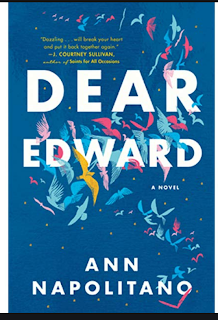
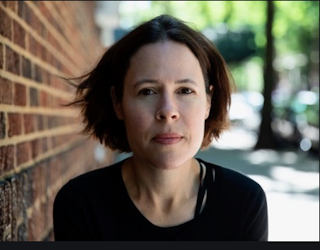
Ann Napolitano has done a miracle, crafting a novel that is both superbly literary and heartwrenchingly moving. But don't just take my word (or my blurb) for it. Look at this stellar press she's getting.
Books-A-Million selected Dear Edward as their 2020 President’s Pick.Dear Edward chosen as a December Book of the Month.Dear Edward chosen as a January 2020 Indie Next Pick.Library Reads selected Dear Edward as their number one pick of January 2020 books.“Dear Edward is that rare book that breaks your heart and stitches it back together during a reading experience that leaves you profoundly altered for the better. It’s about the infinitesimal difference between being a victim and being a survivor, between living and being alive. Don’t miss this one.”—Jodi Picoult, NYT bestselling author of Small Great Things and A Spark of Light
“Dear Edward isn’t just a beautiful novel, clear-eyed and compassionate even as it pulls us into such difficult terrain. It’s an examination of what makes us human, how we survive in this mysterious world, how we take care of each other. It’s the kind of book that forces you to trust that the author, who will break your heart, will also lead you toward something wondrous, something profound. After this brilliant novel, I will follow Ann Napolitano to the ends of the earth.”—Kevin Wilson, author of The Family Fang and Nothing to See Here
“Outstanding, beautifully written, a compulsive read. Dear Edward is the best book about a young person I’ve read since Emma Donoghue’s Room.”—John Boyne, bestselling author of A Ladder to the Sky and The Heart’s Invisible Furies
“Ann Napolitano’s writing is astonishing. I’m in awe.”—Marian Keyes, bestselling author of The Break and The Brightest Star in the Sky
“I loved Dear Edward so, so much. It made me laugh and weep. So many times I had to stop after reading a paragraph to acknowledge the beauty of Ann Napolitano’s writing. In Edward, his friend Shay, and the passengers on the airplane, Napolitano offers unforgettable characters, people you know you will miss after you’ve turned the book’s last page. Magnificent!”—Lily King, author of Euphoria
“From its breathtaking premise—a boy is the sole survivor of an airplane crash—to its absolutely rhapsodic finish, Dear Edward is about the persistence of hope, the depth of love, and the unexpected, radiant moments that make up our lives. If I loved this stunning novel any more, I’d have to marry it.”—Caroline Leavitt, New York Times bestselling author of Pictures of You and Cruel Beautiful World
“A stunning novel of courage and connection in the face of unimaginable loss. Beautifully written, with characters so intensely alive you will hold your breath as they break your heart. An extraordinary read.”—Helen Simonson, author of The Summer Before the War and Major Pettigrew’s Last Stand
“Gripping and elegaic, this is a captivating novel about loss, love and growing up.”—Rosamund Lupton, bestselling author of Sister
“Weaving past and present into a profoundly beautiful, page-turning story of mystery, loss, and wonder, Dear Edward is a meditation on survival, but more important, it is about carving a life worth living. It is about love and hope and caring for others, and all the transitory moments that bind us together.”—Hannah Tinti, author of The Twelve Lives of Samuel Hawley and The Good Thief
“Eddie is an ordinary twelve-year-old, until a horrific plane crash turns him into the real-life Boy Who Lived. Ann Napolitano brings clear-eyed compassion to every character in Dear Edward, from Edward himself, caught between living and merely surviving, to his fellow passengers, who don’t have that choice. The result is a rich, big-hearted tapestry that leaves no one behind. Fans of Room and Extremely Loud and Incredibly Close will be spellbound by Dear Edward, which explores trauma with the same honesty and tenderness as it does the crooked path to healing.”—Chloe Benjamin, New York Times bestselling author of The Immortalists
“From the first page of this heartwarming and heart-wrenching novel, I was dazzled. Napolitano weaves a story that brims with humanity—with joy and sorrow, love and friendship, survival and triumph, and a cast of unforgettable characters. Dear Edward is a masterpiece that should be at the top of everyone’s reading list.”—J. Courtney Sullivan, bestselling author of Saints for All Occasions
Ann is also the author of A GOOD HARD LOOK and WITHIN ARMS REACH, she was also long-listed for the Simpson/Joyce Carol Oates Literary Prize
I am thrilled to have her here. Thank you, Ann!
I always want to know what is haunting someone into writing a book. I think I know some of the answer from your glorious authors note in the book, but I still would love you to talk more about it.
There was a real plane crash in 2010, that I became obsessed with. The flight originated in South Africa and crashed in Libya—most of the passengers were Dutch, and on their way home from vacation. Only one passenger survived, a nine-year-old boy named Ruben van Assouw. The boy was found still strapped into his seat about a half mile from the wreckage–the speculation was that he’d been sitting near the fuselage and had been basically ejected from the plane. He had a badly broken leg and a punctured lung but was otherwise fine. Everyone else, including his parents and brother, had died immediately. I couldn’t read enough about this story, and the obsession was such that I knew I was going to have to write about it. I needed to write my way into understanding how this young boy could walk away from this wreckage, from the loss of his family, and not only survive, but to find a way to live his life.
Would you say that your previous novels have taught you skills in terms of craft, or do you, like me, alas—have writers’ amnesia, where every book is a new book and everything you think you know about writing flies out the window?
I have the same experience as you, sadly—every book is a new book, with its own challenges and its own hard problems. Structure is always a headache, though an interesting one. I like to think, however, that my sentence-by-sentence writing improves somewhat with each book, and that I get a little better at accessing the emotional grid of the story. That might be wishful thinking, though. It takes me a long time to muscle a novel into a place where I’m happy with it. It took eight years to write Dear Edward, and I would say that for the first five years the whole thing was at best mediocre, with a lot of major and minor flaws. Stubbornness is perhaps my most defining trait as a writer, though—I basically will not give up until the novel works.
I love the way the book is structured in alternating chapters, with some chapters set right in the plane before it goes down, so we can know the lives of the people it is carrying, and the other chapters set in present day, showing how Edward is grappling with the loss. Was this always the plan?
Yes, it was always the plan. When I conceived of the story (based on the idea of the real crash) I knew the story would start with the plane taking off and end with it crashing. I wanted the story of the flight and Edward’s story afterward to sit side by side, in part because I knew the flight and the crash were a weight Edward would have to carry with him every day of his life. He would never be able to set it down; at best, he’d learn how to bear it.
I also loved (without giving anything away), how we got to live some of Edward’s life post-plane with him, and experience his changes along with him. There was so much grace there, so much beauty. Can you talk about how life can be both unutterably sad and compellingly gorgeous?
I would love more than anything to talk about that! But I don’t know how, and I think that’s a large part of why I write novels. I can try to say something over eight years and several hundred pages that I could never express in clear speech out of my mouth. But perhaps it is in moments of great sadness that we as humans are the most beautiful? I think of being in New York for 9/11, and how hundreds of people rushed to hospitals to donate blood, and how firefighters and emergency personnel from all over the country got in their cars and trucks when they heard the news and drove to New York to help. Others lined the West Side highway to applaud those emergency workers as they arrived. When we show up for one another—and I believe we are hardwired to do so—it is heartbreakingly beautiful.
What’s obsessing you now and why?
The history of basketball, and the history of racism within basketball. I’ve been obsessed, and reading everything I can on the subject, for about two years. It’s amusing to me, because I had no interest in basketball up until that point, but it’s also exciting, because I know it’s a push toward the story I will tell next. I know the obsession will inform the novel I’m taking notes on now, but I don’t know exactly why or how yet.
What question didn’t I ask that I should have?
These were excellent questions. Thank you, Caroline.
Published on January 02, 2020 11:59
December 13, 2019
What's cooler than going around telling stories to babies and kids? Nothing! And here, Tthe Storybook Mom Nili Yelin tells all, including details about her tattoo!
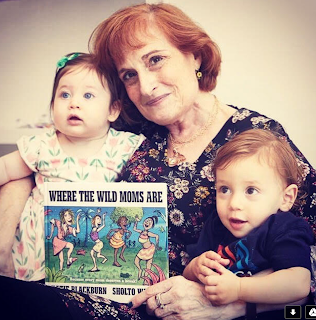
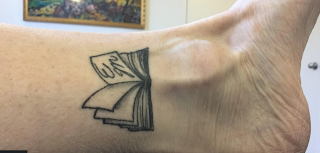
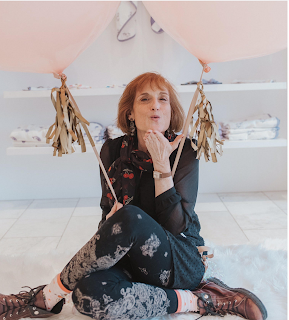
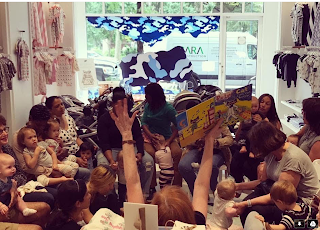
It’s no secret that I think award-winning Nili Yelin is the coolest person around. She's combined her professional theatre career with mommyhood to create The Storybook MomTM.
Using an interactive, educational and highly amusing style, Ms. Yelin likes to call her story-telling, “Sit Down Stand-up.” Founded on the high-minded principle that children like to see a grown-up act silly, Yelin entertains a hard-core audience of two-years olds—and their fatigued moms and dads. She delivers a full performance of the written word, even though the words are few, rhyming, and surrounded by pictures.
Along with her many weekly storytimes, Yelin regularly hosts the annual Chicago Tribune Printers Row Lit Fest Children's Stage. She story-tells for the Field Museum and their podcasts for children in association with The Crown Family Play Lab, The Shedd Aquarium, Museum of Science and Industry, and various venues around Chicago and the suburbs. Yelin has expressed the lofty goal of having “every kid in Chicago know their ABC’s backwards before they enter pre-school.”
Ms. Yelin’s outreach includes after-school programs with the Chicago Mayor's office, homeless shelters and domestic violence centers; The Center for Companies That Care on their corporate literacy initiative, Terrific Tales, performing in schools and libraries on Chicago’s South Side; Bernie's Book Bank, a not-for-profit organization that collects and distributes books to low income schools; and Creatively Caring and Sunrise Homes, storytelling for children with autism and special needs and older people with dementia.
Yelin has appeared on WGN TV News and in numerous magazines, newspapers, websites and blogs. Awarded "Best Storyteller" by Make It Better Magazine and Time Out Chicago Magazine, Yelin is currently working with Storyola (tm) on a storybook app. She is also writing her debut book on techniques of storytelling.
I'm so delighted to host her!
How did you get involved with storytelling for kids?
In 2000 there was an actor’s strike and I was unemployed for 6 months, I saw a sign in a baby store looking for an Opening Day Storyteller so I called and was hired! I had read in my children’s preschools so I just brought a bunch of books and my kids and went for it! The store owner asked me to do it weekly, people saw me, and word of mouth spread thanks to the Mommy Network and it just blew up into a full time thing! I found my passion combining my love of books and kids and with my schedule of carpooling it worked right into my schedule. I had taken my kids to STORYTIMES and was usually bored and thought that kids should be exposed to real performances of words and as a trained actress and stand up comedian I just meshed it all together to create my own”sit down, stand up” style of storytelling. The hours are much better than when I was doing standup too. I used to joke that I wish I could sit down and do comedy in the daytime and lo and behold that is what I ended up doing! Also taking care of a little being is hard all day long so I wanted caregivers to be able to laugh and drink some coffee together too,
How is storytelling for kids different than for adults in the less obvious ways—and tell us about the “giggle level” AND about the photo on your website of a baby dressed as Raggedy Ann with a red nose?
Performing for babies takes being so present in the moment and using focus and energy to keep their attention. They are he most honest audiences in existence, and you feel when they are engaged and believe in you and the feedback is immediate. I truly get in the zone and feel more alive and free when I interact with babies and toddlers and they respond to my total openness and lack of self consciousness,. The sillier and more spontaneous I am the more we connect, I really believe I am a 4 year old, for some reason that is my golden zone. I learned English when I was four, having come to NYC from Israel and I believe my relationship to words and my love of words, and books really solidified at that age.
I used to write some of the Wishbone Books, based on the PBS series about a little dog who wisecracked his way through classic literature, and I remember how much I used to love to go to bookstores to talk to kids. The energy is so different than standing in front of adults! You get such an appreciative audience. So my question is now about to segue into babies. How do you engage a group of babies with storytelling?! How are you able to get them to interact with you?
My core fan base is 2-5 years old and babies are a whole different ballgame. I first did a fully baby aged STORYTIME at Monica + Andy 5 years ago and I remember it took all my 30 plus years of training and experience to keep them engaged. At that young age babies cannot sit still and listen to stories but they parallel play so it’s all about using tone, rhythm, energy and lots of physicality. I remember being drained after the first 45 minute STORYTIME with all babies because I had to use my body a s voice more actively but it is also exhilarating and establishing a connection with love and books at that young age is powerful. I put out board books for them to hold, and they eat them up, literally. I love that babies are so physically curious about books and I encourage tactile interaction. I spend a lot of money replacing board books but it’s worth it.
You also tell stories at Monica & Andy, which has some of the most adorable kids clothing I’ve seen. Want to talk about that?
I learned about this incredible baby and toddler organic clothing brand when I read an article in Forbes or Crain’s about this new brand opening in Chicago in 2014 and that the founder, Monica Royer wanted to create an experiential retail experience with classes and events, including STORYTIME. I was the biggest storyteller in Chicago, (and there weren’t many to begin with), and I was thinking, “Who is going to be their storyteller.? I met with Monica and she said let’s try one and see and as soon as I did the one she asked me to come back every week.
She was one of 12 weekly clients and I was doing festivals and parties every weekend and after 18 years of that I was thinking it would be great to do this all the time but would love to do it in one place with a salary and benefits.
Monica and I became friends and started meeting for coffee and she saw something in me that she wanted to help nurture, to help me grow as a business and as a brand and then all of a sudden the manager position in the new New York City location opened up and my gut told me to seek the position of returning to my old Upper West neighborhood where I had lived in the eighties and nineties and as long as I could still do STORYTIME as part of the job I was in!! It was a huge risk and life change but I knew I had to go for it. I felt so torn to leave the community and work I had built in Chicago but I felt with my own kids grown up I wanted to go back to my hometown and explore my roots. When I first moved to America we lived with my grandparents on the Lower East Side and it has also inspired me to write a children’s book about that area and my grandparents.
I got a rush when I saw you read No, David by David Shannon, and Click Clack Moo, which I used to read to my son when he was little and I still remember the drawings and the story. I believe stories imprint on us, don’t you? And do you think that is part of why it’s so important for kids to hear stories? And, what’s yoru favorite storytelling book now?
Yes, this is everything! Books from our childhood and the books from our children’s childhood are treasure boxes of memories and who we were when we read these....my Dad was a voracious reader and just seeing him in the act of reading colored my entire world. Books are friends, you can take them with you, they open up the world and make you feel less alone. I love the moment when you read something and are blown away that the author put in words a feeling you had and identified it deeply.
My current faves are always all books by the late and great Amy Krouse Rosenthal, my mentor and muse. Also Mo Willems, Matthew Cordell and the Pete The Cat series.
I love quirky, funny, and dramatic emotions which also center on huge life lessons. Since kids are always falling down and over during STORYTIME I get to I,port the biggest life lesson which is When you fall down you just get back up....
What’s obsessing you now and why?
I am writing my first picture books, I consider myself an adapter and dramatist of picture books and have read thousands for decades so I believe what I write has to be worthy of the best that I have encountered and the precision of the words and story has to be spot on,...having done voice over work and been directed on individual performance of words is a great example of the detail and specificity a picture book demands, and I have been working in various ideas for years. I get sick of a lot of them and get stuck and put them away but I currently have been working on a book that I feel great about, and have the feeling I get when I read my favorites aloud so persistence and perseverance may pay off yet. I have a childlike optimism, idealism and hope that despite numerous obstacles, rejections and disappointments is still going strong.
What question didn’t I ask that I should have?
I love the questions you asked, and the only through line to all this that I missed is my love for Emily Dickinson, the poet. The Belle of Amherst, the one woman show about her was my senior acting project at Northwestern University and as I performed the show certain lines impacted me for life....my mission statement is “A word is dead when it is said, some say, I say it just begins to live that day.
I met Julie Harris, the actress who played Emily in this show to much acclaim and one of the actors who I long admired and one of the reasons I became an actress at the time I was working on this show and also named my daughter for Emily Dickinson.
Last year I got my first tattoo of an open book with my children’s initials in Emily Dickinson’s handwriting.
My next may be a mermaid,
<!-- /* Font Definitions */ @font-face {font-family:"Cambria Math"; panose-1:2 4 5 3 5 4 6 3 2 4; mso-font-charset:0; mso-generic-font-family:roman; mso-font-pitch:variable; mso-font-signature:-536870145 1107305727 0 0 415 0;} @font-face {font-family:Calibri; panose-1:2 15 5 2 2 2 4 3 2 4; mso-font-charset:0; mso-generic-font-family:swiss; mso-font-pitch:variable; mso-font-signature:-536859905 -1073732485 9 0 511 0;} @font-face {font-family:-webkit-standard; panose-1:2 11 6 4 2 2 2 2 2 4; mso-font-alt:Cambria; mso-font-charset:0; mso-generic-font-family:roman; mso-font-pitch:auto; mso-font-signature:0 0 0 0 0 0;} /* Style Definitions */ p.MsoNormal, li.MsoNormal, div.MsoNormal {mso-style-unhide:no; mso-style-qformat:yes; mso-style-parent:""; margin:0in; margin-bottom:.0001pt; mso-pagination:widow-orphan; font-size:12.0pt; font-family:"Times New Roman",serif; mso-fareast-font-family:Calibri; mso-fareast-theme-font:minor-latin;} p {mso-style-noshow:yes; mso-style-priority:99; mso-margin-top-alt:auto; margin-right:0in; mso-margin-bottom-alt:auto; margin-left:0in; mso-pagination:widow-orphan; font-size:12.0pt; font-family:"Times New Roman",serif; mso-fareast-font-family:"Times New Roman";} .MsoChpDefault {mso-style-type:export-only; mso-default-props:yes; mso-fareast-font-family:Calibri; mso-fareast-theme-font:minor-latin;} @page WordSection1 {size:8.5in 11.0in; margin:1.0in 1.0in 1.0in 1.0in; mso-header-margin:.5in; mso-footer-margin:.5in; mso-paper-source:0;} div.WordSection1 {page:WordSection1;} </style> -->
Published on December 13, 2019 09:02
November 24, 2019
Cynthia Newberry Martin talks about TIDAL FLATS, the story of a marriage at the crossroads, being obsessed by relationships, being a debut author, writing, and so much more.
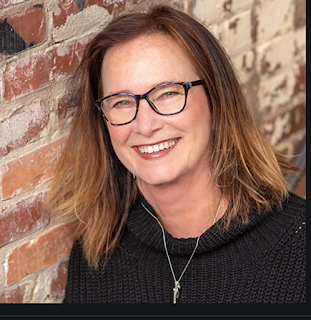
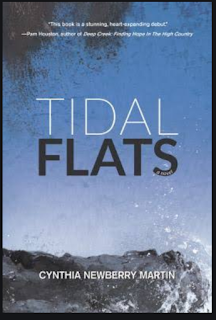
Cynthia Newberry Martin is the author of The Painting Story, placed on the Short List for Finalists in the novel category of the 2010 Pirate’s Alley Faulkner Society William Faulkner-William Wisdom Creative Writing Competition, and at the same time, the second novel I wrote, Between Here and Gone, placed as a Semi-Finalist. She tells us: So far, all in drawers instead of stores, but I say: Hey, you won PRIZES for them.
Her new novel TIDAL FLATS is the story of a marriage, the family a wife wants (and her husband doesn't), and what time and separation do to people. And it's incredible. Just look at these raves:
“Cynthia Newberry Martin is a tremendous writer, with a Woolfian talent for taking the full measure of small moments. Her work is both subtle and revelatory, and I’ve been waiting a long time for this book.” –Rebecca Makkai, author of THE GREAT BELIEVERS
“I admire Martin’s capacity to render her characters with the dignity of complexity. And I double-admire that she takes that same care with her settings, turning Place into a player that has its own ‘human’ heart. The novel swirls with light and love.” –Joshua Mohr, author of SIRENS and DAMASCUS
Thank you so much for being here, Cynthia!
I always think a writer is haunted into writing a book. Is that true for you? What was the question you were desperate to answer?
When the youngest of my four children left for college in 2012, I had had children at home for 31 years. I was restless, past ready for a different life. I had started talking to my husband years earlier. I told him I wanted to spend some of my days near water, but as the years went by, what I wanted specifically was this: to spend a week a month in Provincetown to write and breathe the New England air. On the first of these monthly trips in January of 2013 (and I’m writing from Provincetown now, toward the end of my seventh year of these trips), when I sat down to start writing Tidal Flats, the question I didn’t even know I was desperate to answer was whether two people who want different things in life could make marriage work.
Cass’s past scars her and impacts her present—and her future. For her, her parents and their life seem to be replaying in her. Do you think we can ever really escape that? It feels to me that even understanding our pasts doesn’t stop them from encroaching on us.
I think the more determined we are to escape our past, as Cass is, the more we run right into it. It’s like when you tell yourself not to think about the elephant—and then that’s all you can think about. And even if we manage not to run right into it, when we pause and look back, there it is. Instead, if we face the past and acknowledge its place in us, if we nod to it, take a breath and let it ripple through us, then I think we can move forward, knowing the place from which we are moving.
I love the idea that Cass loves a photojournalist. A man who can capture the truth of events, but the truths in his own life are not always the ones that Cass wants. I’ve always felt that photographs, like writing, like any kind of art—and like life—shift in their truths. Can you talk about that please?
Good art has breathing room. And if there’s breathing room, the reader or the viewer has the space to see different things, different truths. What we are able to see often depends on knowledge and awareness, as well as the slant the artist brings to the work at hand. A photo in black and white can highlight a different truth than one in color. A close-up of a little girl’s dirt-smeared face is one truth, but when you zoom out to show her holding onto the hand of a man whose face is also smeared with dirt, that’s another one. And when you zoom out even more to see the burning car next to them, that’s another one still. Ethan doesn’t just snap the shutter; he waits, even though he usually has no idea what he’s waiting for. Cass loves that about Ethan, that he’s able to see what is there and also what could be there.
This is your debut! Tell us what that was like. What kind of writer are you? And has the success of this debut (you’ve got some stellar blurbs) impacted your next book?
It was exciting! But on the first day, I was so nervous about standing up in front of people and about being the center of attention. I had watched other writers do this for a long time and knew what doing a good job looked like. Which just made me more nervous. But I really wanted to enjoy these moments. I had worked so hard to get here. After my third event in 24 hours, I realized the only way I was going to enjoy readings and interviews was if I looked at the experiences as a way to learn more about myself and others. And the only way to do that was to stop trying to do as good a job as someone else and to focus on being myself and connecting with others.
As far as the reception of Tidal Flats, I started to say it has not at all impacted my next book, but then I remembered a thought I had a few weeks ago. Which was that now that I finally have a book published, I can care even less about writing “a bigger book,” which is what agents and editors were always asking me for. Which brings me to the final part of your question, and that’s that what I write about is day-to-day life, the domestic life that we, male and female, all lead after we walk in the door, after we get through with the flashy or not-flashy lives we lead in the public. And I’m a writer who loves language.
A lot of the story world is set in Afghanistan. What was your research like and what surprised you about it?
The most surprising thing happened before I even started writing the book. On the first of my monthly trips to Provincetown, when I was headed there to begin the new novel that would turn into Tidal Flats, I was thinking that one of the characters would have something to do with Vietnam or Afghanistan. On the flight, I ended up sitting next to Michael Sheridan, the Director of Community Supported Film, a Boston organization that trains local storytellers in conflicted and developing countries. He was on his way home after spending three months in Afghanistan.
Michael, in his exhausted state, spent the entire flight answering my questions and showing me his photos. He was nice enough to let me contact him throughout the time I was writing the novel. I was even able to talk to his wife. I also read newspaper articles, watched clips of Afghanistan, and searched the internet. If Ethan had been a point-of-view character, I believe I would have had to visit Afghanistan myself, but since Cass was learning about Afghanistan from Ethan, it seemed right that I learned about Afghanistan from Michael.
I was also mesmerized by the photos of Steve McCurry—the brilliant colors and the boldness and complexity of the images. These photos were inspiration throughout the years I was working on the novel. I pinned them up in my study and always had them in my carry-on.
What’s obsessing you now and why?
The question of why I’m so obsessed about marriage. I think I just started yet another novel about it. In Rebecca Makkai’s The Great Believers, a character says, “You’ll never know anyone’s marriage but your own. And even then, you’ll only know half of it.” But through fiction, I can get on the other side of the closed door. And I want to know what’s happening there—in the evenings, in the mornings, in the kitchen. Behind that closed door is where I want to be.
What question didn’t I ask that I should have?
Why did it take me so long to get a book published? And I don’t know. Maybe everything else I had ever done had been too easy, and the universe wanted to see how I would handle a difficult situation. Or maybe the universe wanted to know how much I wanted this. I was so close so many times. I had full manuscripts requested over and over again. I had editors love a novel only to pass it around a house without garnering enough support. Perhaps I spent too many years on the traditional publishing scenario: agent/NY publisher. But on the plus side, I feel more confident now as a writer than I would have if I’d published a book even five years ago. And what an adventure to publish my first book at the age of 62.
Published on November 24, 2019 08:08
Hey, what real-life lessons can kids (and adults) learn from superheroes? (How about the right way to breathe away angry feelings from The Hulk?) Randall Lotowycz talks about SUPERHERO PLAYBOOK (I already bought up copies to give to friends.)
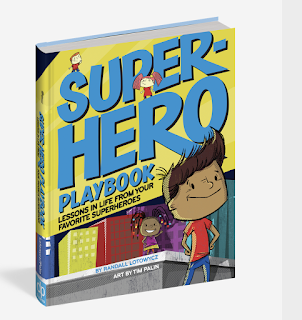
 Come on, how COOL is this?
Come on, how COOL is this? 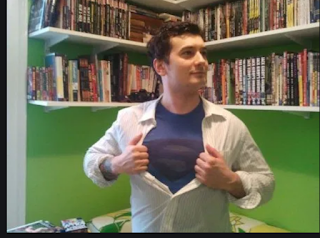 Portrait of the author as a superhero
Portrait of the author as a superhero Ok, so it's always exciting to get to work with someone new at Algonquin Books, my publisher, and as soon as I knew that Randall Lotowycz was going to be the new director of marketing and sales, I emailed to say hello, and discovered we both share an obsession with movies. BUT here is the really cool part. I didn't know that Randall is the creator of DARTS!, the world's first and only magnetic dartboard wall calendar, AND the author of DC Comics Super Heroes and Villains Fandex. And wait, there's more! He also wrote SUPER-HERO PLAYBOOK, which I bought immediately (because authors need sales, no matter who they are), and it promptly became one of my favorite books because of its incredible life lessons and positive spin on being kind, standing up to bullies the right way and even how to control your breathing so you don't get angry. And here, Randall tells us why.
Thank you so, so much, Randall.
Where did the idea for this book come from? To me, it’s pure genius to take something that seems pure escape for kids and to turn it into something that is an important learning experience? Also, I found my own heart being warmed by reading this book, and I love that this is something that can benefit kids, parents, and anyone who loves superheroes. In a way, you are challenging people to be their own real-life superheroes, right?
The germ of the book formed years ago, mostly in response to a specific group of adult male comic book readers who have a rather toxic outlook. They believe they “own” these characters and are quite vocal (on social media and sometimes in person) about their displeasure when they feel their cherished characters are being ruined in some way and that current comic creators are catering to a modern, more diverse audience instead of the “true” fans. Comic book writers Brian Michael Bendis and Greg Rucka, among others, have spoken online about how this group of fans acts in a way that is completely at odds with the virtues these comic characters extol. I found that dissonance fascinating and stewed on it for a while.
Flash forward a few years, and I have a young stepson. I’m lucky enough to share my love of superhero comics and films with him. It was important to me to lead with the virtues. I wanted to share why I loved these characters. I could have kept this between he and I, but I was fortunate to find a publisher who was excited the idea and wanted to make it into a book.
I look at these characters as modern day folklore. They’re a distinctly American tradition that has roots going back to Johnny Appleseed and John Henry (that’s not diminish the many influential and important international comic book creations). We can learn something from them. I wanted to share with my stepson, and anyone else interested in reading, ways these characters can teach you how be a good person, the core of any superhero. I just happen to like my parables with tights and capes.
I love the voice, which is funny, warm and reassuring. (Are you up for the challenge? I knew you would be.) What kid wouldn’t love that! So how did you come to that voice?
I just wanted to speak in a way I hoped the intended audience would respond. I wanted some of my humor in there. And I didn’t want to sound like I was lecturing. I’m sure I had Mr. Rogers speaking over my shoulder as I wrote. But to keep it relevant to the subject, I’d say a healthy mash-up of two of the best incarnations of Superman: the winking paternal 50s Superman George Reeves and friend you can always count on, Christopher Reeve.
I have to know how you found all these superheroes—I didn’t know there were so many. I was happy to learn about Swamp Thing and Cyborg. And Squirrel Girl!
30 years of reading comics and a semi-encyclopedic memory carried me through. The hard part was narrowing it down to 20. I wanted to a wide variety and I didn’t want them all to be straight white men (that’s not always easy, btw). There were old favorites and, of course, the stars of the latest Marvel movies. And then there’s Squirrel Girl. She’s fantastic and has had a wonderful series over the past five years by Ryan North and Erica Henderson, from which I drew nearly all of my chapter on her. She was due to star in TV show meant to air by the time the book came out, but the show wasn’t picked up. Hopefully we’ll see a live-action Squirrel Girl sooner than later. Until then, read her comics! I may have boiled it down to a simple lesson, but they crafted a delightful and beautiful world around her.
What I love so much about this book is the incredible messages (even bad guys can have good ideas!) body image issues, learning to be a good person in the world. And the real-life examples (if someone is mean to you, you can respond with restraint and love like Wonder Woman!) You don’t talk down to kids. And oh my god, HULK BREATHING to calm yourself down. Actually, you talk UP. I also loved that every superhero is presented with challenges that can also be kid-sized. Can you talk about all of this?
I wouldn’t have Hulk Breathing without my wife, a yoga instructor. I borrowed/adapted the technique of Lion’s Breath from her lessons.
But, in general, I wanted something tangible for each lesson. A child isn’t going to have to fight Ares the God of War but they will have to know how to react to someone who is mean to them. Children are drawn to superheroes. Who hasn’t tied a towel around their neck at some point? With each lesson, I wanted to seize on that moment to show how they can act like their favorite heroes, even in their kid-sized, towel-wearing world.
I aimed high, so I know younger readers might need their parents to explain some of the lessons. And maybe some parents won’t necessarily want their 8-year-old learning about how to question authority, but a little troublemaking never hurt anyone.
The drawings are fantastic, fun and bright and the whole set-up of the book, with the sidebars and the colors are perfect, too. How did you come to figure out the structure? And how did you work with the illustrator.
Where do I begin? I had a truly talented team who took what I wrote and elevated it in a way I could never imagined. All credit goes to Tim Palin for his brilliant imagination and artistry, Jeff Shake who knocked it out of the park with his development and design, Alejandro Arbona for his editorial insight, and everyone at Duopress for their enthusiasm and care. This book couldn’t have existed without their unique talents.
What superhero do you think the world needs now and why?
My default answer will always be Superman because he’s my favorite (I’ll have to show you my Superman and Lois Lane tattoo sometime) and he embodies so many of the virtues I wish I could possess on a daily basis. I could’ve done a book just on him. But in this immediate moment in time, I think we need young superheroes like Ms. Marvel, Squirrel Girl, and the new, younger Spider-Man, Miles Morales. They’re young, full of hope, and are going to save the world. That’s not say I want to pass the buck to the next generation. Every single adult needs to be out there doing what kids like Greta Thunberg and David Hogg are doing. But we need young heroes to inspire future generations.
What’s obsessing you now and why?
Time, mostly. Balancing it, using it wisely, appreciating it in the moment. This answer is vague, but honest. This year has been a reflective and productive one, and it’s sometimes difficult to reconcile those two states.
I’m also obsessing over finding English subtitles for a Chinese horror film that hasn’t been released in the US. That’s probably taking a little too much time.
What question didn’t I ask that I should have?
I can’t think of one. This has been a lot of fun. Thank you for the opportunity! <!-- /* Font Definitions */ @font-face {font-family:"<span class="goog-spellcheck-word" style="background: yellow none repeat scroll 0% 0%;" id=":dg.191" tabindex="-1" role="menuitem" aria-haspopup="true">Cambria</span> Math"; <span class="goog-spellcheck-word" style="background: yellow none repeat scroll 0% 0%;" id=":dg.193" tabindex="-1" role="menuitem" aria-haspopup="true">panose</span>-1:2 4 5 3 5 4 6 3 2 4; <span class="goog-spellcheck-word" style="background: yellow none repeat scroll 0% 0%;" id=":dg.205" tabindex="-1" role="menuitem" aria-haspopup="true">mso</span>-font-<span class="goog-spellcheck-word" style="background: yellow none repeat scroll 0% 0%;" id=":dg.207" tabindex="-1" role="menuitem" aria-haspopup="true">charset</span>:0; <span class="goog-spellcheck-word" style="background: yellow none repeat scroll 0% 0%;" id=":dg.209" tabindex="-1" role="menuitem" aria-haspopup="true">mso</span>-generic-font-family:roman; <span class="goog-spellcheck-word" style="background: yellow none repeat scroll 0% 0%;" id=":dg.214" tabindex="-1" role="menuitem" aria-haspopup="true">mso</span>-font-pitch:variable; <span class="goog-spellcheck-word" style="background: yellow none repeat scroll 0% 0%;" id=":dg.218" tabindex="-1" role="menuitem" aria-haspopup="true">mso</span>-font-signature:-536870145 1107305727 0 0 415 0;} @font-face {font-family:<span class="goog-spellcheck-word" style="background: yellow none repeat scroll 0% 0%;" id=":dg.231" tabindex="-1" role="menuitem" aria-haspopup="true">Calibri</span>; <span class="goog-spellcheck-word" style="background: yellow none repeat scroll 0% 0%;" id=":dg.232" tabindex="-1" role="menuitem" aria-haspopup="true">panose</span>-1:2 15 5 2 2 2 4 3 2 4; <span class="goog-spellcheck-word" style="background: yellow none repeat scroll 0% 0%;" id=":dg.244" tabindex="-1" role="menuitem" aria-haspopup="true">mso</span>-font-<span class="goog-spellcheck-word" style="background: yellow none repeat scroll 0% 0%;" id=":dg.246" tabindex="-1" role="menuitem" aria-haspopup="true">charset</span>:0; <span class="goog-spellcheck-word" style="background: yellow none repeat scroll 0% 0%;" id=":dg.248" tabindex="-1" role="menuitem" aria-haspopup="true">mso</span>-generic-font-family:<span class="goog-spellcheck-word" style="background: yellow none repeat scroll 0% 0%;" id=":dg.252" tabindex="-1" role="menuitem" aria-haspopup="true">swiss</span>; <span class="goog-spellcheck-word" style="background: yellow none repeat scroll 0% 0%;" id=":dg.253" tabindex="-1" role="menuitem" aria-haspopup="true">mso</span>-font-pitch:variable; <span class="goog-spellcheck-word" style="background: yellow none repeat scroll 0% 0%;" id=":dg.257" tabindex="-1" role="menuitem" aria-haspopup="true">mso</span>-font-signature:-536858881 -1073732485 9 0 511 0;} /* Style Definitions */ p.<span class="goog-spellcheck-word" style="background: yellow none repeat scroll 0% 0%;" id=":dg.269" tabindex="-1" role="menuitem" aria-haspopup="true">MsoNormal</span>, <span class="goog-spellcheck-word" style="background: yellow none repeat scroll 0% 0%;" id=":dg.270" tabindex="-1" role="menuitem" aria-haspopup="true">li</span>.<span class="goog-spellcheck-word" style="background: yellow none repeat scroll 0% 0%;" id=":dg.271" tabindex="-1" role="menuitem" aria-haspopup="true">MsoNormal</span>, div.<span class="goog-spellcheck-word" style="background: yellow none repeat scroll 0% 0%;" id=":dg.273" tabindex="-1" role="menuitem" aria-haspopup="true">MsoNormal</span> {<span class="goog-spellcheck-word" style="background: yellow none repeat scroll 0% 0%;" id=":dg.274" tabindex="-1" role="menuitem" aria-haspopup="true">mso</span>-style-<span class="goog-spellcheck-word" style="background: yellow none repeat scroll 0% 0%;" id=":dg.276" tabindex="-1" role="menuitem" aria-haspopup="true">unhide</span>:no; <span class="goog-spellcheck-word" style="background: yellow none repeat scroll 0% 0%;" id=":dg.277" tabindex="-1" role="menuitem" aria-haspopup="true">mso</span>-style-<span class="goog-spellcheck-word" style="background: yellow none repeat scroll 0% 0%;" id=":dg.279" tabindex="-1" role="menuitem" aria-haspopup="true">qformat</span>:yes; <span class="goog-spellcheck-word" style="background: yellow none repeat scroll 0% 0%;" id=":dg.281" tabindex="-1" role="menuitem" aria-haspopup="true">mso</span>-style-parent:""; margin:0in; margin-bottom:.0001pt; <span class="goog-spellcheck-word" style="background: yellow none repeat scroll 0% 0%;" id=":dg.289" tabindex="-1" role="menuitem" aria-haspopup="true">mso</span>-pagination:widow-orphan; font-size:12.0pt; font-family:"Times New Roman",serif; <span class="goog-spellcheck-word" style="background: yellow none repeat scroll 0% 0%;" id=":dg.303" tabindex="-1" role="menuitem" aria-haspopup="true">mso</span>-<span class="goog-spellcheck-word" style="background: yellow none repeat scroll 0% 0%;" id=":dg.304" tabindex="-1" role="menuitem" aria-haspopup="true">fareast</span>-font-family:<span class="goog-spellcheck-word" style="background: yellow none repeat scroll 0% 0%;" id=":dg.307" tabindex="-1" role="menuitem" aria-haspopup="true">Calibri</span>;} .<span class="goog-spellcheck-word" style="background: yellow none repeat scroll 0% 0%;" id=":dg.308" tabindex="-1" role="menuitem" aria-haspopup="true">MsoChpDefault</span> {<span class="goog-spellcheck-word" style="background: yellow none repeat scroll 0% 0%;" id=":dg.309" tabindex="-1" role="menuitem" aria-haspopup="true">mso</span>-style-type:export-only; <span class="goog-spellcheck-word" style="background: yellow none repeat scroll 0% 0%;" id=":dg.313" tabindex="-1" role="menuitem" aria-haspopup="true">mso</span>-default-props:yes; font-size:10.0pt; <span class="goog-spellcheck-word" style="background: yellow none repeat scroll 0% 0%;" id=":dg.321" tabindex="-1" role="menuitem" aria-haspopup="true">mso</span>-<span class="goog-spellcheck-word" style="background: yellow none repeat scroll 0% 0%;" id=":dg.322" tabindex="-1" role="menuitem" aria-haspopup="true">ansi</span>-font-size:10.0pt; <span class="goog-spellcheck-word" style="background: yellow none repeat scroll 0% 0%;" id=":dg.327" tabindex="-1" role="menuitem" aria-haspopup="true">mso</span>-<span class="goog-spellcheck-word" style="background: yellow none repeat scroll 0% 0%;" id=":dg.328" tabindex="-1" role="menuitem" aria-haspopup="true">bidi</span>-font-size:10.0pt; <span class="goog-spellcheck-word" style="background: yellow none repeat scroll 0% 0%;" id=":dg.333" tabindex="-1" role="menuitem" aria-haspopup="true">mso</span>-<span class="goog-spellcheck-word" style="background: yellow none repeat scroll 0% 0%;" id=":dg.334" tabindex="-1" role="menuitem" aria-haspopup="true">fareast</span>-font-family:<span class="goog-spellcheck-word" style="background: yellow none repeat scroll 0% 0%;" id=":dg.337" tabindex="-1" role="menuitem" aria-haspopup="true">Calibri</span>;} @page WordSection1 {size:8.5in 11.0in; margin:1.0in 1.0in 1.0in 1.25in; <span class="goog-spellcheck-word" style="background: yellow none repeat scroll 0% 0%;" id=":dg.354" tabindex="-1" role="menuitem" aria-haspopup="true">mso</span>-header-margin:.5in; <span class="goog-spellcheck-word" style="background: yellow none repeat scroll 0% 0%;" id=":dg.358" tabindex="-1" role="menuitem" aria-haspopup="true">mso</span>-footer-margin:.5in; <span class="goog-spellcheck-word" style="background: yellow none repeat scroll 0% 0%;" id=":dg.362" tabindex="-1" role="menuitem" aria-haspopup="true">mso</span>-paper-source:0;} div.WordSection1 {page:WordSection1;} </style> -->
Published on November 24, 2019 07:58
November 18, 2019
A shaving points scandal. A legendary youth basketball team. And redemption. Matthew Goodman talks about his latest page-turner, THE CITY GAME
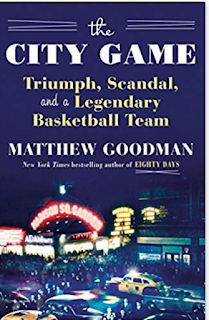

Years ago, a client of my husband gave us court side tickets to see the Knicks. To say that we were enthralled is putting it lightly. I felt forever changed and I've loved basketball ever since. So, of course, I was excited to read Matthew Goodman's CITY GAME, about good kids on a team who seemed to have it all but couldn't resist the lure of easy money. The book reads like a thriller, every page full of hope, glory--and yeah, desperate yearning. And I'm not the only one to say so. Look at these raves:
“A wonderful book. . . . a fascinating look at a team full of talented young men who torpedoed their careers because they were unable to resist the lure of easy money. . . . The CCNY point-shaving scandal remains, decades after it happened, a heartbreaking story of venality, and Goodman turns out to be the perfect author to tell it. The City Game is a gripping history of one of college basketball’s darkest moments, an all too human tale of young people blowing up their futures in a misguided attempt to make good.”
–Michael Schaub, NPR Books
“Fans of college hoops will devour Goodman’s excellent history. . . . Goodman effectively combines interviews and extensive research to definitively recreate the unfortunate story of the 1949–50 City College of New York basketball team, which won an unprecedented two college championships in the same year (the NIT and the NCAA) before being tainted by a point-shaving scandal involving several of its stars.”
—Publishers Weekly (★ starred review)
“Goodman not only chronicles the point-shaving scam that eventually brought down the team, but he also provides a richly detailed portrait of mid-twentieth-century New York City. . . . Goodman follows the principals through their lives, even interviewing their children. This is a marvelous, vibrant recounting of a bit of sports history in which the backdrop of New York dominates.”
—Booklist (★ starred review)
“Matthew Goodman’s historical account of City College is far more than descriptions of games played in Madison Square Garden and other arenas. He takes readers to the halls of government; New York City courtrooms; backrooms where bookies and gamblers plied their trade; and police stations where willing officers were paid to look away from gambling activities. It is a story both inspiring and upsetting, and is told with skill, insight, and deep understanding of time and place. . . . Goodman’s stirring history reminds us that athletic success often comes at a price. His story of greed and exploitation in college sports one-half century ago is as relevant today as ever.”
—Bookreporter
“Goodman takes on the story more as a historian than sportswriter, and readers will be grateful for that. . . . Most of the riveting action unfolds outside the arena, in the halls of government and through the hands of bookies; here, Goodman is at his scene-setting best. . . . He smoothly shapes readable narratives of a deep roster of characters, including coaches, politicians, police, detectives, organized criminals, and, of course, players. Basketball fans are not the only readers who will be edified by this significant slice of New York City history.”
—Kirkus Reviews
“Matthew Goodman has composed a portrait of an era that transcends sports. Painstakingly reported and written with great affection, The City Game is a masterpiece of American storytelling.”
—Gilbert King, Pulitzer Prize–winning author of Devil in the Grove
Matthew Goodman is the New York Times-bestselling author of four books of nonfiction: The City Game: Triumph, Scandal, and a Legendary Basketball Team (Ballantine Books, 2019); Eighty Days: Nellie Bly and Elizabeth Bisland’s History-Making Race Around the World (Ballantine Books, 2013); The Sun and the Moon: Hoaxers, Showmen, Dueling Journalists, and Lunar Man-Bats in Nineteenth-Century New York (Basic Books, 2008); and Jewish Food: The World at Table (HarperCollins, 2005).
Matthew’s books have been Barnes & Noble Discover Great New Writers, Indie Next “Great Reads,” and Borders Original Voices selections, and a finalist for a GoodReads Choice Award, and have been translated into eight languages. His writing has appeared in the Wall Street Journal, USA Today, The American Scholar, the Harvard Review, Salon, the Forward, Bon Appetit, and many other publications, and has been cited for Special Mention in the Pushcart Prize and Best American Short Stories anthologies.
Thank you so much for being here, Matthew!
I always think that writers are haunted into writing their books, that they are looking for answers to something and hope to find it in a novel. What was haunting you beside, obviously, the amazing story here?
That’s a wonderful question. In his short story “The Leather Man,” E. L. Doctorow wrote of “individuals in whom history intensifies like electroshock.” It’s just sort of a tossed-off phrase, but for some reason it hit me very powerfully, because in reading it I suddenly realized that in a certain way that’s my whole writing project. I was trained as a fiction writer, with all of that emphasis on characterization and narrative structure and authorial voice and all the rest, but ever since I was a kid I’ve loved history, and now in writing narrative history I’ve been able to combine those two disciplines. I think what I’m trying to do in my writing is to find and then think as deeply as I can about individuals who get caught up in historical events and then have to negotiate their way through them. That’s the thing that I seem to return to again and again in my work.
So, for instance, in my previous book, Eighty Days, about Nellie Bly and Elizabeth Bisland’s race around the world in 1889, I found that for me the prime motivator, the thing that really kept me going in the writing, was less the events of the trip – although I loved writing about all those fascinating places like Hong Kong and Yemen and the Suez Canal – than the idea of how in embarking on this around-the-world race these two young women were stepping into a historical whirlwind unlike anything they had ever experienced, a vast roaring wave of publicity and controversy, that would ultimately lead to some unexpected after-effects in their later lives. In my earlier book, The Sun and the Moon, it was the notion of this privately radical English newspaperman in New York, Richard Adams Locke, who concocts a hoax about life on the moon as a way of satirizing the religious astronomers of the time, and who gets caught up in a social frenzy that he had not anticipated and which he doesn’t really know how to handle.
With my current book, The City Game, I loved writing about the amazing history of City College and the incredibly exciting double-championship season, and then the uproarious victory celebrations and all that. But if the story had ended with the triumphant season, I don’t think I would have written the book. Again, the aspect of the story that I found most motivating – that I guess you could say “haunted” me in the writing – was how these talented young guys, these really smart and sympathetic black and Jewish kids with a bit of fame but not much money, got themselves involved in a web of corruption that they didn’t really understand, and which they spend the rest of their lives trying to overcome.
As a result of their encounters with history, these young City College basketball players, like Nellie Bly and Elizabeth Bisland and Richard Adams Locke before them, ended up not necessarily happier, but certainly with a deeper understanding of themselves and of society: they were individuals in whom history has intensified like electroshock.
What’s so astonishing is that this team you are writing about was the only team in history to win the NIT and NCAA tournaments in the same year. It's so shocking to me that such talented kids had conspired to shave points, but then again, given that they were sort of powerless, and not making money, is it really any wonder that they were susceptible to others’ schemes and their own dreams of easy money? But what is more astonishing is how they were able to redeem themselves. I often feel that America says it likes redemption, but it never follows through total acceptance. Why do you feel this was different?
They were not the first poor kids to take money from gamblers, nor would they be the last. But what I was so fascinated to discover, in researching this book, was how widely divergent the motivations among them were for what they did. It was so much more complicated and ambiguous than the typical “they were corrupt and amoral and sold out their school” lessons of the newspaper editorialists. I mean, some of them were more willing participants and some were less willing, but they all had their own motivations. One of them did it, as he explained, simply because “I wanted the other guys to like me.” He was this handsome, talented guy, a classic golden-boy star athlete, but he came from a rather sheltered family and had grown up feeling socially awkward and left out; as somebody who knew him told me, “He always wanted to be a guy hanging out on a street corner, but he had nobody to hang out with.” Another one of the guys was almost entrepreneurial in his motivations – he felt that a lot of people were making money off his talents, and he had a right to get a small piece of those profits. Another guy left the money entirely untouched in a box in the basement: he hoped someday to be able to give it to his parents, who were really struggling financially.
One of the main characters of my book, a guy named Floyd Layne, resisted the scheme for a long time before he finally caved and accepted the money. He took $3,000, which he wrapped up in a handkerchief and buried in a flowerpot in his bedroom, and didn’t use any of it except for $110 that he spent on a washing machine for his mother. I focus a lot on him in the book, because of all the guys, he was the one who refused to leave the scandal behind him; he was the one who continued to fight for years to clear his name, to earn a spot in professional basketball, to prove to the world that he was an honorable, decent person, not the criminal he was made out to be in the papers. And of all the guys, he was the one who really found redemption – in a way that was almost too amazing to be true. (When I discovered what had happened to him, I almost couldn’t believe my luck as a writer! It was a ready-made ending to the story.)
I’m not sure that any of the guys, other than Floyd, were ever able to fully redeem themselves: When they died, their obituaries always put the scandal in the headline. Over time, I think the pain became less sharp – got subsumed by the good things in their lives, families and careers and what have you – but I don’t know that it ever really went away. There was always this gnawing sense of disappointment and regret and anger, some of it directed inward, some outward. Floyd did experience a kind of redemption, but it was genuinely hard won; he had spent years and years toiling away in community centers in New York’s most impoverished neighborhoods in the Bronx, helping kids get away from drugs and gangs and violence and into colleges and occupations. Over time, he told me many years later, he had even begun to see himself as fortunate: “I would have been unreachable and untouchable in the NBA,” he said. “Instead, I was able to touch the lives of so many kids.”
For Floyd, the scandal had been a defining personal tragedy; but through him, it had been for so many of the city’s children a kind of blessing. That, I think, more than anything, was ultimately the source of Floyd’s sense of redemption – of coming to terms with the pain of his own past.
Your research must have been fascinating. What surprised you the most about it? What did you expect to find and what did you find instead?
In writing my books, I’m hoping not just to tell the reader what happened, but also, crucially, to give as strong a sense of possible of what it felt like to be living in that particular time and place, to provide a sense of life as it was actually lived. My absolutely favorite responses from readers is when they tell me, “Wow, I felt like I was really in New York in 1835,” or some such thing. Thus, in Eighty Days, I was hoping that readers would feel what it was like to be barreling down the Wasatch mountain range on a train; or sailing along the Suez Canal on a moonlight night; or raising a glass of wine with Jules Verne in his home in Amiens, France. With The City Game, I was looking for a more jazzy sense of mid-century New York, of Times Square with its arcades and flea circuses and neon lights; or the insanely plentiful breakfasts at the old “Borscht Belt” hotels in the Catskills; or Madison Square Garden in the moments before a game, the darkness inside the arena punctuated by what seemed like thousands of fireflies – the burning tips of cigarettes. Much like a fiction writer, I’m always looking for those vivid, specific details that work together to conjure up a scene. And you can find those in what might not seem to be the most obvious places. Oddly enough, one source that I’ve found to be particularly helpful is travel guidebooks from the period I’m writing about. A historian is, in a sense, a kind of traveler, though one who is traveling through time rather than space, and just like those other travelers, a historian can use guidebooks to get descriptions of the city, and discussions of restaurants and hotels, the most interesting sights, appropriate forms of dress (for weather and style alike), and the habits of the “locals.”
Of course, I’ll always read as many newspapers as I can from the particular place and time about which I’m writing. And in reading the newspapers about the 1951 basketball scandal, I began to notice that there was anothersports bookmaking scandal going on in New York at the very same time – the Harry Gross scandal, in which it was revealed that this big-time bookmaker from Brooklyn was laying out millions of dollars in bribes to policemen and politicians to protect his syndicate. How was it possible, I wondered, for there to be two sports bookmaking scandals going on in New York at the very same time? And, more to the point, might there somehow be connections between them?
Well, as I delved into the Harry Gross scandal (which never even got mentioned in my book proposal, as I didn’t know it existed when I began the book), I did begin to see, more and more, that there wereconnections between these two scandals, and I began to understand how these young basketball players had gotten caught up in a vast web of corruption that eventually reached the very top levels of government in New York. It was a system of bribes and favors and back-room deals that kept the city running – that got statutes passed and buildings built and candidates elected and, for those who really knew how it worked, fortunes made. That was the way things were done in the city: that was the real “city game” of the book’s title.
What’s obsessing you now and why? I’m obsessed with trying to find my next book topic! Honestly, finding the right topic is the hardest and most painful part of the whole process. Good narrative history requires a story with compelling characters, a dramatic narrative arc, vivid setting, rich subject matter. For me, it’s also important for the main story line – while it has it to be exciting in itself – to also provide a window into larger questions of politics and history. And those types of stories are awfully hard to come by – particularly ones that haven’t already been written! (Or at least not written in the way that you yourself are proposing to do.) It took me about eighteen months to settle on the City College story, after finishing work on Eighty Days. Now I’m entering the same process after having completed work on The City Game. I have no idea what it is that I’m going to find – and no assurance, indeed, that I’ll be able to find anything at all.
What question didn’t I ask that I should have?
Hmm. Maybe: “Do you mind if I tell you the perfect subject for your next book?”
Published on November 18, 2019 14:35
November 12, 2019
Binnie Klein talks about TEN DAYS IN NEWARK, her deeply personal, deeply political, podcast memoir set in 1967 hippie days.
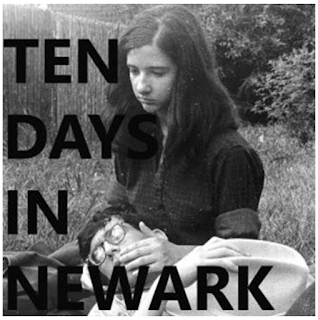
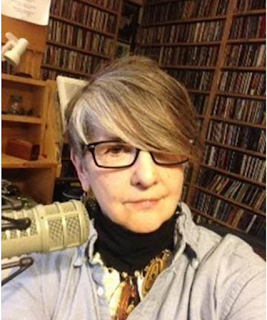
Hey, hey, hey! The 50th anniversary of the Summer of Love is coming up and what better way to celebrate than to go back in time and remember? TEN DAYS IN NEWARK AUDIO MEMOIR by Binnie Klein is a haunting remembrance, and an absolutely wonderful and award-winning (Connecticut Press Club) six-episode audio memoir produced by Binnie Klein and Scott Shapleigh, which can be heard in a variety of ways:
TendaysinNewark
Podbean
Stitcher
iTunes
Binnie can be contacted:
Website
Binnie’s a psychotherapist in private practice in New Haven, a Lecturer in Dept of Psychiatry at Yale University, host of music and interview radio show, “A Miniature World,” on 1st and 3rd Thursdays of each month on wpkn.org. She’s the author of Blows to the Head: How Boxing Changed My Mind (SUNY Press, 2010) (profiled here on the blog!)
Here's just some of the raves:
“Strong and nostalgic, but not at all sentimental. Wonderful voice, evocative guitar”-- Daniel Menaker (My Mistake)
“Binnie’s political and personal memoir of Newark in 1967 is an absorbing example of investigatory and explanatory journalism. Those who wish to learn about those times from actual participants, will find this podcast both educational and touching”—music journalist Peter Gambaccini (Springsteen)
“You had me from the first few minutes of episode one. I found myself with you as you peeled back the layers of memories, and bravely forged ahead to revisit events of your young life”—Radio Producer and former Voice of NPR Frank Tavares
“A great audio memoir, this goes right to the core of those first high school friends we made -- how lost and how wild some become and how they may grow apart but are always with us.”—Louise Wareham Leonard (Fifty-Two Men)
I love Binnie and I'm thrilled to host her here.
I always ask, why now?
When you ask “why now?” I can’t help but think that in some ways I didn’t have a choice about the timing of this audio memoir. A letter arrived from my first boyfriend with news that jostled my dearly held denial about the realities of aging and loss, freshly immersing me in memories of first love, first heartbreak, and the haunting I’d been experiencing all my life – about him, about the sixties, about the impact of a place (Newark, New Jersey), the political cyclone of the era, and the rapid metabolizing of traumatic and ecstatic moments many of us endured.
The familiar look of his handwriting, the poetry in his prose, and the sad news in the letter threw me into a whirlwind of memories about my teen-age years. Odd coincidences occurred. As I describe in Episode 1, I had just accidentally come upon a batch of old black and white photos from that time, the day before the letter arrived. I felt compelled to contact other peers to tell them the news, and each email or conversation led to fresh re-workings of narratives I had comfortably carried. Each contact challenged my vague, dissociated chronology. Each contact made me remember more, and with the memories came grieving I’d never fully done. But it wasn’t all grim. There was much laughter in the re-connecting, and even in-person visits.
What was it like going back into the past? What surprised you?
I didn’t expect to feel quite so confused and troubled by this delving into the past. I’d been a cocky teenage girl who was good at appearing “cool,” obsessed with boys, bound for trouble, carried by the sexual revolution and the company of hippies and activists, running wild without much supervision. During the reconstruction and note-taking I started, my husband and collaborator Scott Shapleigh said “This is a podcast.” There was so much mystery and discovery; he felt it was a detective story, with individual episodes, and amazingly, he was not threatened by the subject matter and that we’d be seeking out my first love. I was very comfortable with storytelling in an audio form, having produced essays and interviews, some on my radio show, “A Miniature World” on WPKN-FM. I began to keep a journal of the sequence of events, knowing that eventually I’d be talking to or maybe even seeing my first boyfriend; there was an inevitability to that. What surprised me? How well people remembered me. How much I’d repressed. There’s a funny little detail that didn’t make it into the podcast. In all the photos I look rather dour and gloomy. I’m never smiling. At first I thought it was about constantly trying to look cool and/or sexy, but then I remembered something. That was only part of it; I was trying to conceal an odd, slightly misshapen lower front tooth that made me very self-conscious. Years later I had it fixed.
What was your research like?
I was very lucky to have such an archive of photos to reference (they can be viewed on my Instagram page). I think of one where I am sitting in high grass in a backyard in Newark. Seeing the chain link fence and a shabby garage reminded me of how plainly we lived—most families in the Weequahic section in four room apartments in two family houses.What I thought were wildflowers in one photo taken in Weequahic Park were really weeds, upon closer inspection. The tenderness in the photographs of me and Louis was especially moving; my fingers moving across his face, my long brown hair hanging down, his beloved cowboy hat tossed on the ground nearby, and our friend Gary, cross-legged, always with us, rolling a cigarette. Yes, very particular just to me and my little crowd, but I think many of us have a “Ten Days in Newark” that haunts them. I’ve even considered producing podcasts for others who have such periods or episodes. Who would you contact? What would you want to know? Would you have the courage to go back?
Do you miss the girl you used to be?
The plucked guitar arpeggios of Scarborough Fair --I love that girl--the soft saliva sounds--I miss that girl--songs like the world is opening up--that girl was full of potential--are you going to--was said to her; you're the one, the real thing--her collection of short leather boots, her squirming body underneath the boys, their cologne, their mottled skin, parsley, sage, rosemary and...her potential..I miss that girl --two heads lean in and barely touch--I don't miss her brittleness but I miss her openness--this is from my notes for “Ten Days in Newark”
What was it like writing this? How difficult was it?
I wasn’t just keeping notes. Many nights I’d lie in bed attempting to will myself back in time, to try and remember new details, to swim again in the feelings of excitement or sadness. Could I recall Louis’ hands? His kiss? Why was I so devastated by our normal developmental passages – his going off to college and finding other girls? I had also saved our letters! Re-reading them made me cringe. I seemed a shallow, manipulative girl, enjoying political groups like SDS for the social activities they brought, fascinated by the boys who played guitar and knew all the chords. I bought my first guitar. But the letters also told other stories, of trouble at home, of Louis saying we’d marry but he’d “be a revolutionary.” And then of course, the letters became less and less frequent. Some arrived on torn pieces of paper.
And then it seemed my little posse had dispersed to join Weatherman, a radical political group. The podcast allowed me to finally understand why they went, and what their experiences were like.
What's obsessing you now and why?
What’s obsessing me now? When I’m not in the throes of trauma from the political madness I am, gulp, writing songs! This is brand-new for me, and wonderfully exciting. Right now I’m working with a fantastic collaborator who knows and teaches music. We hope to have some pieces up on YouTube soon. The first song, “My Last Bad Boy,” comes out of “Ten Days in Newark.” Because a book, a podcast, a tune may be written, but are the thoughts and feelings behind them ever truly finished? I am also writing “Tiny Tales from the Bin”—100-150 words in mini-memoirs. I post them on Facebook.
What question didn't I ask that I should have?
Ask me whether I’m glad I did this project. And I’ll tell you: yes and no. Mary Karr, in her excellent book Art of Memoir cautions that if you are going to delve really deeply into the past and there are landmines waiting, be careful. Don’t do it if you’re going to have a breakdown, she says. “Ten Days in Newark” brought very powerful and difficult feelings into my everyday life for several years. I was yes, obsessed, like a novelist maybe, with a story I kept trying to tell in the best way I could. I’m very glad I re-connected with some old friends. We still like each other. But first love and first heartbreak? “Be afraid..be very afraid…” You don’t know what you’re going to find. You don’t know how much grieving remains. I didn’t know how old I’d wind up feeling, finally giving up that 16 year old girl with all her potential. It helps that I’m extremely proud of this effort. I think it’s unique; with recorded phone calls, original music, and spoken prose. I continue to be deeply moved and gratified when a generous listener conveys a comment. When they love it or relate to it, I get chills.<!-- /* Font Definitions */ @font-face {font-family:Helvetica; panose-1:0 0 0 0 0 0 0 0 0 0; mso-font-charset:0; mso-generic-font-family:auto; mso-font-pitch:variable; mso-font-signature:-536870145 1342208091 0 0 415 0;} @font-face {font-family:"Cambria Math"; panose-1:2 4 5 3 5 4 6 3 2 4; mso-font-charset:0; mso-generic-font-family:roman; mso-font-pitch:variable; mso-font-signature:-536870145 1107305727 0 0 415 0;} @font-face {font-family:Calibri; panose-1:2 15 5 2 2 2 4 3 2 4; mso-font-charset:0; mso-generic-font-family:swiss; mso-font-pitch:variable; mso-font-signature:-536859905 -1073732485 9 0 511 0;} /* Style Definitions */ p.MsoNormal, li.MsoNormal, div.MsoNormal {mso-style-unhide:no; mso-style-qformat:yes; mso-style-parent:""; margin:0in; margin-bottom:.0001pt; mso-pagination:widow-orphan; font-size:12.0pt; font-family:"Times New Roman",serif; mso-fareast-font-family:Calibri; mso-fareast-theme-font:minor-latin; mso-fareast-language:ZH-CN;} p.MsoListParagraph, li.MsoListParagraph, div.MsoListParagraph {mso-style-priority:34; mso-style-unhide:no; mso-style-qformat:yes; margin-top:0in; margin-right:0in; margin-bottom:0in; margin-left:.5in; margin-bottom:.0001pt; mso-add-space:auto; mso-pagination:widow-orphan; font-size:12.0pt; font-family:"Times New Roman",serif; mso-fareast-font-family:Calibri; mso-fareast-theme-font:minor-latin; mso-fareast-language:ZH-CN;} p.MsoListParagraphCxSpFirst, li.MsoListParagraphCxSpFirst, div.MsoListParagraphCxSpFirst {mso-style-priority:34; mso-style-unhide:no; mso-style-qformat:yes; mso-style-type:export-only; margin-top:0in; margin-right:0in; margin-bottom:0in; margin-left:.5in; margin-bottom:.0001pt; mso-add-space:auto; mso-pagination:widow-orphan; font-size:12.0pt; font-family:"Times New Roman",serif; mso-fareast-font-family:Calibri; mso-fareast-theme-font:minor-latin; mso-fareast-language:ZH-CN;} p.MsoListParagraphCxSpMiddle, li.MsoListParagraphCxSpMiddle, div.MsoListParagraphCxSpMiddle {mso-style-priority:34; mso-style-unhide:no; mso-style-qformat:yes; mso-style-type:export-only; margin-top:0in; margin-right:0in; margin-bottom:0in; margin-left:.5in; margin-bottom:.0001pt; mso-add-space:auto; mso-pagination:widow-orphan; font-size:12.0pt; font-family:"Times New Roman",serif; mso-fareast-font-family:Calibri; mso-fareast-theme-font:minor-latin; mso-fareast-language:ZH-CN;} p.MsoListParagraphCxSpLast, li.MsoListParagraphCxSpLast, div.MsoListParagraphCxSpLast {mso-style-priority:34; mso-style-unhide:no; mso-style-qformat:yes; mso-style-type:export-only; margin-top:0in; margin-right:0in; margin-bottom:0in; margin-left:.5in; margin-bottom:.0001pt; mso-add-space:auto; mso-pagination:widow-orphan; font-size:12.0pt; font-family:"Times New Roman",serif; mso-fareast-font-family:Calibri; mso-fareast-theme-font:minor-latin; mso-fareast-language:ZH-CN;} span.textexposedshow {mso-style-name:text_exposed_show; mso-style-unhide:no;} .MsoChpDefault {mso-style-type:export-only; mso-default-props:yes; font-size:10.0pt; mso-ansi-font-size:10.0pt; mso-bidi-font-size:10.0pt; mso-fareast-font-family:Calibri; mso-fareast-theme-font:minor-latin;} @page WordSection1 {size:8.5in 11.0in; margin:1.0in 1.25in 1.0in 1.25in; mso-header-margin:.5in; mso-footer-margin:.5in; mso-paper-source:0;} div.WordSection1 {page:WordSection1;} </style></span></span></span></span></div>--><span style="font-family: "times" , "times new roman" , serif;"><span style="font-family: "times" , "times new roman" , serif; font-size: small;"> </span></span><br /><div class="MsoNormal"><span style="font-family: "times" , "times new roman" , serif;"><span style="font-size: small;"><br /></span></span></div><div class="MsoNormal"><span style="font-family: "times" , "times new roman" , serif;"><span style="font-size: small;"><br /></span></span></div><div class="MsoNormal"><span style="font-family: "times" , "times new roman" , serif;"><span style="font-size: small;"><br /></span></span></div><br /><style><!-- /* Font Definitions */ @font-face {font-family:"Cambria Math"; panose-1:2 4 5 3 5 4 6 3 2 4; mso-font-charset:0; mso-generic-font-family:roman; mso-font-pitch:variable; mso-font-signature:-536870145 1107305727 0 0 415 0;} @font-face {font-family:Calibri; panose-1:2 15 5 2 2 2 4 3 2 4; mso-font-charset:0; mso-generic-font-family:swiss; mso-font-pitch:variable; mso-font-signature:-536859905 -1073732485 9 0 511 0;} @font-face {font-family:"Helvetica Neue"; panose-1:2 0 5 3 0 0 0 2 0 4; mso-font-charset:0; mso-generic-font-family:auto; mso-font-pitch:variable; mso-font-signature:-452984065 1342208475 16 0 1 0;} /* Style Definitions */ p.MsoNormal, li.MsoNormal, div.MsoNormal {mso-style-unhide:no; mso-style-qformat:yes; mso-style-parent:""; margin:0in; margin-bottom:.0001pt; mso-pagination:widow-orphan; font-size:12.0pt; font-family:"Times New Roman",serif; mso-fareast-font-family:Calibri; mso-fareast-theme-font:minor-latin; mso-fareast-language:ZH-CN;} a:link, span.MsoHyperlink {mso-style-unhide:no; color:blue; mso-themecolor:hyperlink; text-decoration:underline; text-underline:single;} a:visited, span.MsoHyperlinkFollowed {mso-style-noshow:yes; mso-style-priority:99; color:purple; mso-themecolor:followedhyperlink; text-decoration:underline; text-underline:single;} span.mbtext {mso-style-name:mb_text; mso-style-unhide:no;} .MsoChpDefault {mso-style-type:export-only; mso-default-props:yes; font-size:10.0pt; mso-ansi-font-size:10.0pt; mso-bidi-font-size:10.0pt; mso-fareast-font-family:Calibri; mso-fareast-theme-font:minor-latin;} @page WordSection1 {size:8.5in 11.0in; margin:1.0in 1.0in 1.0in 1.0in; mso-header-margin:.5in; mso-footer-margin:.5in; mso-paper-source:0;} div.WordSection1 {page:WordSection1;} </style> -->
Published on November 12, 2019 09:55
October 25, 2019
What do we owe those we love? Jane Bernstein's extraordinary new novel THE FACE TELLS THE SECRET spans generations and continents and she talks about it--and writing, love, and growing up in a household full of shadows.
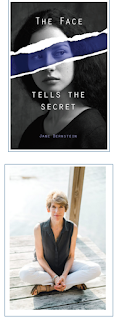
I admit it. I stalked Jane Bernstein years ago after I read her book Departures, which I was obsessed with. And I tracked her down and wrote to her, and we became friends. Real life friends! She put me at her gorgeous home in Pittsburgh, we've visited here in NYC and if we followed each other's careers any closer, we'd be the same person.
I've loved all her books, and this new one THE FACE TELLS THE SECRET is one of her best. About how responsible we should be to the ones we love, about disability seen from a very different lens, and about love and place and family, it's page-turning and gorgeously written. And I'm not the only one to say so. Take a look here:
“Reverberating with vivid characters, tempestuous bonds, and poignant moments, The Face Tells the Secret is a contemporary page-turner as haunting as it is humane.” Rachel Simon, New York Times bestselling author of Riding The Bus With My Sister and The Story of Beautiful Girl
“Jane Bernstein’s novel is a beautiful, almost balletic exploration of the role of repression across generations. This book asks many questions—about knowledge, forgiveness, disability, the slippery shapes of fear and love—but always through the lived life of its narrator. Her journey into the past and attempts to chart a future had me hooked.” Elizabeth Graver, author of The End of the Point
“The characters in Jane Bernstein’s expansive and beautiful novel, “The Face Tells the Secret,” are exquisite, complex, real creations. From Pittsburgh to Tel Aviv, they bring us into their lives with depth and honesty. A wonderful book.” Karen E. Bender, author of Refund, a finalist for the National Book Award
“Who should we care for?” asks Roxanne, the narrator of The Face Tells the Secret. “How much of our lives should we spend looking after others? When do we turn away to protect ourselves?” Jane Bernstein delivers no easy answers in this heartbreaking and, ultimately, heart-mending novel. Rather she explores the complications of human relations in many variations – between mother and child, siblings, man and woman, over long-distances, and in close quarters. This book is about love and life, and absolutely worth reading.
Suzanne Kamata, author of Losing Kei and Indigo Girl
Jane writes fiction, memoir, essays, and screenplays, and in 2018, a picture book, cowritten with her daughter, Charlotte Glynn. Jane’s books include Bereft – A Sister’s Story, and two memoirs about raising a daughter with intellectual disabilities, Loving Rachel and Rachel in the World. Jane’s awards include a Fulbright Fellowship and two National Endowment for the Arts Fellowships in Creative Writing. She’s a professor of English and member of the Creative Writing Program at Carnegie Mellon University and lives in Pittsburgh, PA and New York City with Jeff, the man, and Rozzie, the dog, both of whom travel well.
Thanks so much for being here, Jane! Only thing better would be sitting across a table from you!
I always think writers are haunted into writing their novels. What was haunting you about this particular one?This book is very much about ghosts and what it’s like to grow up with parents who cannot talk about the tragedies of the past but who are deeply wounded by these unseen disasters. Although the events in The Face Tells the Secret are not autobiographical, the themes are ones I can’t escape as a writer. Like my protagonist, Roxanne, I grew up in a house full of shadows. In my case, it was the death of my sister, when I was seventeen. After her murder, my parents did not – could not -- talk about her.
So much of this astonishing novel is about the ways we love—or don’t love, and how loss amplifies that. Could you talk about that please?There are two kinds of “love” that Roxanne wrestles with. One has to do with caregiving and responsibility for one’s kin. How much should she give to the wounded people in her life? Then there’s romantic love. To paraphrase a question Roxanne asks herself late in the novel: how can you love when you have never been loved yourself? Roxanne is tender-hearted, but at the start of the novel has been unable to form a romantic relationship with an emotionally stable man. Her mother, who rarely touched her, rarely had a kind word, was too wounded to love her the way a baby and child should be loved. In the course of the book, she has to learn how to open herself to love and to trust that she can be loved in return.
You’ve written so many gorgeous books, from memoirs to novels. Do you feel that you are able to build on each previous novel, or is every work a new one?Oh, I wish I could build on what I’ve written, but I seem unable to fully do that. I know more about craft than I did when I did as a beginning writer, but that knowledge doesn’t always help in creating a coherent work. Sometimes it even hinders. But as you say, we are haunted into writing our books, and so I bumble along.
What’s obsessing you now and why?I’m finishing a first draft set in in 1972, which begins with the disappearances of a charismatic middle-aged man. He’s left three women behind – his very young wife, Lindy, who’s the protagonist, his eccentric best friend, and a girl he picked up hitchhiking, who’s pregnant with his child. For a year, the three live together in Maine. Although I know it’s a tough story to write at this particular period of time, I’m trying to write a nuanced portrait of a charming, immoral, kind of awful man, who also, in major ways transformed the course of my protagonist’s life. The story is framed by Lindy at the present time. (And I loved Cruel, Beautiful World, which is this book’s beautiful stepsister…)
What question didn’t I ask that I should have?Who am I reading? Apart from Caroline Leavitt? I loved The Friend, The Body in Question, The Mars Room. I’ve been teaching lit courses of late and read widely all summer long for whatever theme I choose. This year it was “Brooklyn.” My students – men, women, of all ethnicities, mostly computer science or tech majors, all fell in love with A Tree Grows in Brooklyn. I can’t tell you how surprised and delighted I was. They are hungry for great stories.
<!-- /* Font Definitions */ @font-face {font-family:"Cambria Math"; panose-1:2 4 5 3 5 4 6 3 2 4; mso-font-charset:0; mso-generic-font-family:roman; mso-font-pitch:variable; mso-font-signature:-536870145 1107305727 0 0 415 0;} @font-face {font-family:Calibri; panose-1:2 15 5 2 2 2 4 3 2 4; mso-font-charset:0; mso-generic-font-family:swiss; mso-font-pitch:variable; mso-font-signature:-536859905 -1073732485 9 0 511 0;} /* Style Definitions */ p.MsoNormal, li.MsoNormal, div.MsoNormal {mso-style-unhide:no; mso-style-qformat:yes; mso-style-parent:""; margin:0in; margin-bottom:.0001pt; mso-pagination:widow-orphan; font-size:12.0pt; font-family:"Times New Roman",serif; mso-fareast-font-family:Calibri; mso-fareast-theme-font:minor-latin;} .MsoChpDefault {mso-style-type:export-only; mso-default-props:yes; mso-fareast-font-family:Calibri; mso-fareast-theme-font:minor-latin;} @page WordSection1 {size:8.5in 11.0in; margin:1.0in 1.0in 1.0in 1.25in; mso-header-margin:.5in; mso-footer-margin:.5in; mso-paper-source:0;} div.WordSection1 {page:WordSection1;} </style> -->
Published on October 25, 2019 12:58
First, I was addicted to the coffee mints, NeuroMints. Then I began to realize the entrepreneur behind it was also a brilliant prankster artist. So I had to talk to the prodigiously talented Kent Yoshimura here.
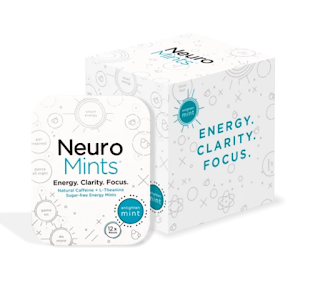

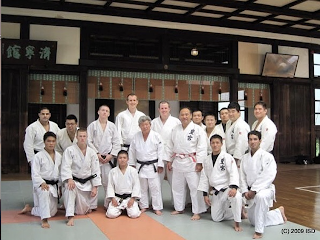
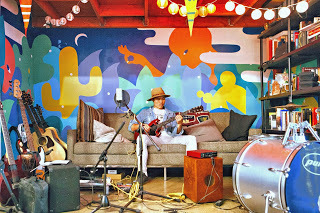

It started with Neuromints.
I am totally addicted to coffee and my son showed me an article about Neurogum, which not only had enough caffeine to power the country, but also had L-theanine, which is a natural kind of soother. I bought the gum and mentioned it on Twitter, saying I loved it but wished it wasn't gum--and
Kent Yoshimura reached out to me. "Wanna try the mints?"
He sent me a care package and I began to realize that he was this extraordinary person--not just an entrepreneur, but a fabulous artist, too. He illustrated Master Davey and The Magic Tea House, which was released worldwide at all Coffee Bean & Tea Leaf locations, and his illustrations have traveled across children’s museums throughout the United States. He has been featured on NBC for his large-scale public art pieces, the New York Times for his mural work, and in TIME magazine, Huffington Post, Men's Health, Vice, and NPR for his YouTube videos.
But wait, there's more! As a martial artist, Kent competed internationally, fighting alongside Muay Thai champions in Thailand and serving as a training partner in Judo for Olympic medalists at the Kodokan and the Japanese royal guards within the Imperial Palace.
In 2015, he co-founded Neuro - a functional confectionary brand revolutionizing the consumable supplement space. The product was successfully backed by over 500 people on Indiegogo in less than three days, and has since been featured in publications such as TIME magazine, Dr. Oz, Forbes, FOX News, Food And Wine, The New Yorker, Buzzfeed, and Fast Company. It can now be found in over 5000 retail locations nationwide.
Alongside his ventures, Kent currently paints large scale murals as both a freelance artist and a qualified muralist through the Department of Cultural Affairs, and most recently co-designed the immersive retail experience CAMP in New York as well as The Sixth Collection for Jerry Lorenzo's streetwear brand Fear of God.
I'm totally thrilled to know him, and to host him here. Cool has a brand new name, right? Thank you, Kent.
So you do so many things so brilliantly, from art to sculpture, to environments to film to writing. What made you who you are today? Were you always creative as a kid? And what is even more fascinating, is how did you make the turn from art to—well, the art of health—with NeuroMints and NeuroGum?
NeuroGum kept me going through Lisbon all week, which is mostly steep hills and nine thousand steep stairs. Where did the idea for this product come from? And what was testing it like? Anything surprise you about it?
Well to start off, thanks!
When I was growing up, my parents were both working, so I spent most of my time after school at the karate studio or in art class. Both those hobbies continued on through high school, but I began deviating away from the arts and leaned towards medicine in college. There, I studied neuroscience, got deeper into martial arts, and met my future co-founder of Neuro, Ryan Chen.
During that time, I would frequently travel to train with the Olympic Judo team in Japan every summer and fight Muay Thai in the stadiums in Thailand. Every day consisted of 4-6 hours of training, and supplementation became extremely important; however, there wasn’t anything to support my energy levels outside energy drinks or coffee at that time. I began mixing my own supplements, using myself as a guinea pig, and my favorite combination eventually became V0 of NeuroGum. Of course, we’ve worked with professional chemists and formulators to refine it since then.
Yet, once an artist, always an artist. My senior year of college, I was injured during training, and I decided to take a step back from pursuing a professional fighting career. I eventually got deeper into film, went to UCLA’s film school after I graduated, and began shooting short commercials and documentaries. On the side, I would do illustration work for extra money, and after illustrating a few children’s books, I got an opportunity with my friend Susan to build the children’s branding for the Coffee Bean and Tea Leaf.
After that, I worked in composing music for film and television with a Sony affiliate called Wava Studios before I began painting larger and larger things. After leaving the studio, both Neuro and my career in murals started to take off. Now, NeuroGum is in about 6000 stores nationwide, and I’ve done over 40 murals around the world.
You’re also an incredible artist! Your use of color is incredible-the surprise pops, the way the tones vibrate. I really loved the guerilla art—a male statue with the bright, brilliant head of a posie! A huge ice cream cone leaning against a building. And the immersive experiences! Especially the one where guests seem to be in an underwater world! Art like this does my favorite thing. It makes you stop and see the whole world differently. So tell us, how do YOU see the world?
I feel that I’m just a prankster at heart. Both guerilla work and murals force a perspective shift in the environment, and whenever I’m out in the wild, I imagine painting the walls a certain color to change the tone of a space or sprinkling some guerilla work to “change” up someone’s daily commute. The world’s our playground – might as well enjoy it!
What’s up next for the company and for you?
In 2020, Neuro will graduate from being just a product to becoming more of a lifestyle brand. We’re constantly looking to improve our products, and we eventually want to become a leader in the cognitive health and wellness space as a whole.
For myself, I consistently try to live a balanced life. Last year, I worked myself too hard and needed to get back surgery after running my body down. Maintaining my health (both physical and mental) and finding a peace with my creative side is the most important thing for me.
What’s obsessing you now and why?
For some reason, I’ve lately been drawn to the Dust Bowl (yes, very random). Perhaps it’s in response to the impending sense of doom with all the conversations surrounding climate change, but it seems we’re consistently making the same mistakes. The stories of the livestock deaths, the locust swarms, and the static force fields all feel both apocalyptic and something straight from Dune.
Published on October 25, 2019 12:46
October 11, 2019
What if you suddenly long for kids but the man you love does not? Is there a right choice? Jackie Shannon Hollis navigates THIS PARTICULAR HAPPINESS: A CHILDLESS LOVE STORY
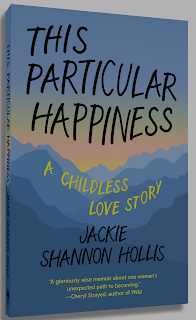
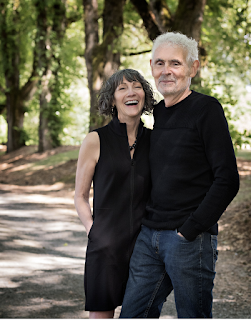
There's so much discussion now about whether or not women should have kids, whether they need to, whether they will regret it or be overjoyed with their decision. It's a surely complex issue and now Jackie Shannon Hollis has written a fabulous book about it ( "A childless love story") called THIS PARTICULAR HAPPINESS. When she falls in love with a man who doesn't want kids, her own yearnings for them begin to loom, as they both search for ways to both live with and satisfy those longings. It's such a great, great sure-to-be-talked about book! Thank you so much, Jackie for being here!
I always want to know what was the Why Now moment for you writing this memoir? What surprised you about it?
Thank you, Caroline. I’m honored that I get to have this conversation with you.
This Particular Happiness Through my thirties and early forties, I struggled with my decision to not have children; the longing in me was powerful but it also sat side-by-side with the freedom and unexpected paths that came of not having children. By the time I hit fifty, I thought I’d settled with being childless. The space had filled in with so many fulfilling things, including many nieces and nephews. Then, in my mid-fifties, when the physical possibility of having a child was clearly no longer on the table, I discovered a new, and unanticipated, layer to my decision. My mother’s health was rapidly declining. Her death would change my sense of family. My nieces and nephews were marrying, and my sisters were soon to become grandmothers. I felt a shifting in these family units, a kind of closing in. I was invited into them but they weren’t mine. I wasn’t sure where my place would be.
I started to write an essay about this, but soon realized this essay was part of a bigger context. About being raised in a generation and a place where having children was seen as inevitable, and what it is like to take a path different than the expected one. I wanted to write about how we choose and how the consequences of our choices unfold and unfold and unfold over time. And I wanted to write about love and identity, with childlessness as the framework for this exploration.
Everything about the writing process surprises me. In the case of This Particular Happiness, when I told people what I was writing about, they seemed excited to talk about their own decision to have or not have children. Parents and non-parents alike. Everyone has their unique perspective on what led them to make the decision they made, and yet there are common threads of searching for identity, and the many ways of loving that we can all relate to.
It fascinated me that you talked about a life you’ve been raised to want. I remember being told that what I wanted was to marry, stay home and have a hobby (um, yeah.) And when I told my mother that I didn’t want to have children, I was told, “Don't ever let anyone hear you say that because they’ll think there’s something wrong with you.” And when years later, I suddenly did want one, and went on to have my son, I was admonished for waiting so long. Can women ever win?
We are given so many mixed messages. I see women struggle with the judgements of others if they choose to not have a child (the common refrain being, “Oh just wait, you will change your mind someday.”). Women experience judgement if they have a child “too young” or if they wait “too long,” judgement for desperately wanting a child and pursuing the sometimes heartbreaking process of fertility treatment, judgement for how they express their grief about infertility, judgement for having only one child or more than two children, for adopting or fostering. And then of course the endless judgement about the parenting choices: too permissive, not permissive enough, how to feed, how to wean, working mom or stay-at-home mom. Good lord.
We have endless possibilities in our lives. Choosing one thing means not choosing something else. The people who love and care about us often make the misstep of calling out what we are not choosing, rather than embracing what we do choose. And sometimes we do that to ourselves, which is why I think the exploration of the source of our own longings is so important. This exploration is a thru-line of This Particular Happiness. Where did my longing come from? The heart? Biology? Or was it a response to outside expectations? What did I truly want? How did I know what I wanted?
Although times have certainly changed, I think there still is a dividing line between women who don’t want to be told they made the wrong choice. But in reality, how can we ever know that? We change all the time, right?
Yes! We change constantly. Look at the number of marriages that end in divorce. Somehow people think they will marry, and all will stay the same. But I don’t know anyone (unless they have lived a very static life) who hasn’t gone through a major transformation of sorts in their forties or fifties. We knew what we wanted when we were twenty but didn’t know who we would be at 45.
Unless we hold firm in apathy and rigidity, we are growing and changing. Those around us will change. Our needs will change. If we don’t recognize this consciously, we will have a lot of turmoil in our relationships (parent/child, sibling, friends, primary partners), and in our careers. I hope we can own our transitions, speak about them, normalize them, so they are less damaging. The ideal would be to notice when we are changing and longing for something new or different. To talk about it and see if we can shift things in the existing structure of our lives. Or find a way to move out of that without damage and wrong-making. That doesn’t mean there won’t be conflict and tumult…but we can approach it more consciously.
I also have to know what kind of writer you are. Any rituals?
Much of the time, I am a very undisciplined writer. When I’m working on a project I schedule out two (and if I’m lucky, three) full days each week. But then I have to get through all the life duty/throat clearing (exercise, garden, house, social media, organize a drawer that is really just fine), before I get myself settled in. I have finally learned this IS my ritual. Work is going on in the background when I am doing the other things. I call it “composting” and by the time I open my laptop, I am ready to go.
I also loved the short lyrical chapters you have. Did you know the book was going to be like that when you began it?
I didn’t and, until I started printing out some of the chapters, I didn’t “see” how short many of them were. As I edited and braided and shaped the manuscript, I saw that the shape of the chapters fit the narrative. Many of the shortest chapters are scenes and memories from my childhood and young adulthood, or memory pieces I’ve taken from what my husband has told me of his childhood. These are what I’d call sense-making scenes, trying to understand who that younger version (him, me, those around us) was and how it led to now.
As the book progresses, the chapters become longer, especially when it comes to where I meet Bill, the man who would become my husband. These scenes are longer, more detailed, and reflect my own intentionality at the time. I wanted to be present. To choose differently, so there are more details, and deeper dive into my inner self. And from this point, the chapters are, for the most part, a bit longer.
What’s obsessing you now and why?
Well it’s impossible to pick just one thing.
I am always obsessed with people, how we think and process and engage with each other. Showtime’s Couples’ Therapy has me completely entranced. I think it is a wonderful series for couples to watch together and then talk about what they see of themselves in the real life people who make up the couples. It is brilliant.
Two books on communication and relationship seem relevant here. Nonviolent Communication: A Language of Love, by Marshall Rosenberg, has me twisted sideway in paying attention to the judgements carried in the words I choose. And a book by Susan Clarke and CrisMarie Campbell called, The Beauty of Conflict for Couples, offers very specific actions for moving through difficult conversations and maintaining the passion through embracing the conflicts rather than avoiding them.
Podcasts are a constant when I drive (and when I vacuum!). I’m a big fan of Terrible, Thanks for Asking. Nora McInerny delves tells the stories of regular people, complicated and honest and beautiful. I also am obsessed with Beyond Well with Sheila Hamilton. She interviews a variety of creative people, covering many topics related to mental wellness. I love Sheila’s voice and the two therapists who join her in conversation.
Memoirs always obsess me such as Liz Prato’s essay collection: Volcanoes, Palm Trees & Privilege: Essays on Hawai’i ; and Huda Al-Marashi’s First Comes Marriage: My Not-So-Typical American Love Story . These books explore relationship in various forms: place, family, primary partner and self.
What question didn’t I ask that I should have?
This Particular Happiness is published by Forest Avenue Press, an independent publishing company run by Laura Stanfill. I feel incredibly lucky to be with a publisher who supports her authors long after publication date. I’m looking forward to conversations with readers about topics I explore in my memoir: the roles of childless or childfree or parent, love, how a relationship can navigate difficult terrain, mothers and daughters, friendship, the long term impact of sexual assault, how to be present with another through grief, and how to find your own particular happiness. If any of your readers would like me to come their way for a conversation, they can let their local bookseller know, or reach out to me. Here’s a link to my website. https://www.jackieshannonhollis.com.
<!-- /* Font Definitions */ @font-face {font-family:"Cambria Math"; panose-1:2 4 5 3 5 4 6 3 2 4; mso-font-charset:0; mso-generic-font-family:roman; mso-font-pitch:variable; mso-font-signature:-536870145 1107305727 0 0 415 0;} @font-face {font-family:Calibri; panose-1:2 15 5 2 2 2 4 3 2 4; mso-font-charset:0; mso-generic-font-family:swiss; mso-font-pitch:variable; mso-font-signature:-536859905 -1073732485 9 0 511 0;} @font-face {font-family:Cambria; panose-1:2 4 5 3 5 4 6 3 2 4; mso-font-charset:0; mso-generic-font-family:roman; mso-font-pitch:variable; mso-font-signature:-536870145 1073743103 0 0 415 0;} /* Style Definitions */ p.MsoNormal, li.MsoNormal, div.MsoNormal {mso-style-unhide:no; mso-style-qformat:yes; mso-style-parent:""; margin:0in; margin-bottom:.0001pt; mso-pagination:widow-orphan; font-size:12.0pt; font-family:"Calibri",sans-serif; mso-ascii-font-family:Calibri; mso-ascii-theme-font:minor-latin; mso-fareast-font-family:Calibri; mso-fareast-theme-font:minor-latin; mso-hansi-font-family:Calibri; mso-hansi-theme-font:minor-latin; mso-bidi-font-family:"Times New Roman"; mso-bidi-theme-font:minor-bidi;} a:link, span.MsoHyperlink {mso-style-priority:99; color:#0563C1; mso-themecolor:hyperlink; text-decoration:underline; text-underline:single;} a:visited, span.MsoHyperlinkFollowed {mso-style-noshow:yes; mso-style-priority:99; color:#954F72; mso-themecolor:followedhyperlink; text-decoration:underline; text-underline:single;} .MsoChpDefault {mso-style-type:export-only; mso-default-props:yes; font-family:"Calibri",sans-serif; mso-ascii-font-family:Calibri; mso-ascii-theme-font:minor-latin; mso-fareast-font-family:Calibri; mso-fareast-theme-font:minor-latin; mso-hansi-font-family:Calibri; mso-hansi-theme-font:minor-latin; mso-bidi-font-family:"Times New Roman"; mso-bidi-theme-font:minor-bidi;} @page WordSection1 {size:8.5in 11.0in; margin:1.0in 1.0in 1.0in 1.0in; mso-header-margin:.5in; mso-footer-margin:.5in; mso-paper-source:0;} div.WordSection1 {page:WordSection1;} </style> -->
Published on October 11, 2019 07:12



